
- Oil and the allied forces
- Arrival of French, British and American troops
- Attack by German U-boats
- Hazardous Shell-tankers, strikers shot
- Atlantic Charter
- Internment camps
- Visit by the House of Orange
- KNIL-military
- Aid campaigns
- Antillean musicians in the Netherlands
- War monuments in the Antilles
- Segundo Jorge Adelberto (Boy) Ecury
- George John Lionel Maduro
- Military victims (Van den Belt, Debrot, Gandelman, Haayen, De Haseth, Henar, Van Meeteren, Veeris)
- Seafarers merchant navy (Albertus, Bernabela H., Bernabela L., Boekhoudt, Bomba, Boom, Calmes, Capello, Cicilia, Clarinda, Coffi A., Coffi J., Constancia, Cornet, Curiel, Curlingford, Daanchi, Dembrooke, Dijkhoff, Doran, Dunlock, Emerenciana, Evertsz, Fa King, Goedgedrag, Goeloe, Gordon, Granger, Hart, Hecker, Hernandez, Hooker, Isijk, Italia, Janga D., Janga N., Jansen E., Jesus de, Josefa, Kraal, Laveist, Leito, Linzey, Lourens, Lynch, Maduro, Manuela, Marchena, Martes, Martijn D., Martijn H., Martijn O., Martijn P., Martijn T., Martis F., Martis H., Maxwell, Montanus, Muller, Palm A. de, Palm H. de, Pannelek, Pieter, Pietersz, Pourier, Putten van, Raas, Rafael, Rasmijn, Richardson, Rosalina, Rosaria, Scharbaai, Scherptong, Schotborgh, Serberie, Simmons, Thielman, Thodé J., Thodé S., Tjietjie, Tromp, Verhoeks, Wilson C., Wilson J., Wilson Th., Winfield, Winklaar A., Winklaar E., Woods A., Woods H., Yong Ah Chong)
- Non-military victims (Beaujon, De Castro Yohai, Cohen Henriquez, Debrot, De Haseth Möller, De Lannoy, Navarro, Sprockel, Winkel)
- Antillean Jews in Westerbork (Alvares Correa, van Lissa-van Lissa, Santcroos, Ster)
The Netherlands Antilles in WW II

Flag: www.robkoster.nl
Oil and the allied forces
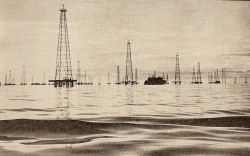
Drilling rigs in the Maracaibo laguna
Picture: Ewing Galloway (Bos & Van Palen Illustrated Atlas)
Few people are aware of the special role Aruba and Curaçao played during the war. Aruba and Curaçao had oil refineries which supplied English, French and American airplanes.
For the crude oil, coming from Lake Maracaibo (1914), the oil companies needed harbours and depots. Venezuela and the oil companies decided on the neighbouring islands of Aruba and Curaçao, where they were assured of good harbours and political stability. In 1918 Royal Oil (KNPM)/Shell established a large refinery in Curaçao; it was given the name of its location, the Isla peninsula in Willemstad harbour. In 1928 the company started a small installation on Aruba, Eagle, near Oranjestad. More important were the Pan American Petroleum activities with its Lago Oil & Transport Co. From 1924 on they had an oil transfer site on the island (via a pier near Oranjestad) and they dredged the natural harbour of Sint Nicolaas. In 1929 the Lago refinery was built there, which would grow into one of the largest in the world. The company changed owners several times and from 1933 on it was owned by Esso (Exxon). As early as 1939 the refineries on the two islands supplied 43% of the British and French oil requirements, and about 80% of those of the British Royal Air Force (mainly high-octane petrol). The American invasion in Northern Africa (1942-1943) was fuelled for 100%, and the battle in the Pacific (1944-1945) for 75%, by oil from the Antillles.
Sources:
http://www.historiadiaruba.aw/index.php?option=com_content&task=view&id=28&Itemid=42
http://en.wikipedia.org/wiki/Lago_Oil_&_Transport_Co._Ltd.
Liesbeth van der Horst, Wereldoorlog in de West (p. 29)
Arrival of French, British and American troops
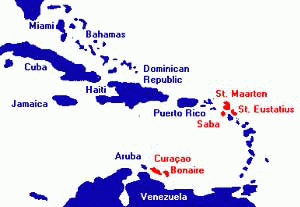
Map: www2.mw.nl
Because of the great military and economical interests it was only logical that, after the German attack on The Netherlands, English and French troops were stationed on the Antilles (1940). By 11 May 1940, 180 French marines were in Aruba; on 13 May 800 British troops came to Curaçao and Sint Maarten. After France capitulated in July 1940, British troops took over the French positions. The French part of Sint Maarten never became pro-German. The Netherlands only had a couple of hundred marines on the islands, supplied by about 2000 poorly equipped and hardly trained 'gunners' in the voluntary corps of Aruba (VKA) and Curaçao (VKC). During the war this number would grow to about 3000 men.

'Gunners of Habaai', voluntary corps Curaçao. (Source: vkcur.org)
Reinforcements were needed badly. German submarines attacked transport ships carrying oil and bauxite, and even attacked the refineries directly (1941-1942).
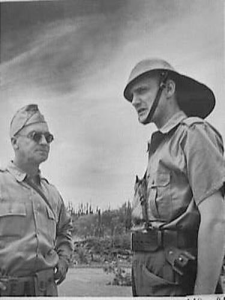
Consultation between a US- and NL-officer at Curaçao, Hato 1942. (Source: gahetna.nl)
The US military did not come into action until after the Japanese attack on Pearl Harbor (7 December 1941), when the United States officially joined the allies. For Panama and the Caribbean this was done under the flag of the Rainbow-5 plan. The supreme command was American but, in the same way as in Jamaica and Trinidad, command was shared with British colonial and military powers. In Aruba and Curaçao and the other Dutch islands it was shared with the Dutch. On 26 January 1942 the pact between the US Ministry of War and the Dutch government in London became a fact. By mid January six A-20 bombers were stationed in Aruba and Curaçao. On 11 February about 2,300 ground forces arrived from New Orleans: a large contingent for Curaçao, a smaller one for Aruba. Three days later the British garrison, which had grown to 1,400 men, left the Antilles. It was not until the end of March that the American and Dutch governments agreed on the command structure. Admiral Jesse B. Oldendorf became the chief of all forces in the area, including the Dutch. Captain van Asbeck, the Dutch commander of the islands, became his chief of staff. Formally the orders of Oldendorf fell under the authority of governor Kasteel. This unambiguous structure of command was not achieved by the US army in Surinam, although from early 1942 on American forces were present in that country. This difference was due to the serious threat to the leeward islands beginning in 1942.
Attack by German U-boats
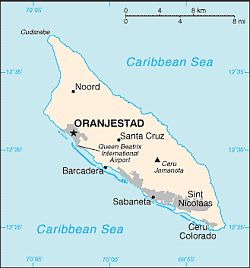
The island of Aruba (Source: www.jewishvirtuallibrary.org)
Operation 'Neuland'
During the night of 15 to 16 February 1942 the island of Aruba took the first attack from a German U-boat in the western hemisphere. It was aimed at the oil transport between Venezuela and the Antilles and also the oil depots. Six German and two Italian submarines took part in the operation. The one of the commander, the U-156, would attack the brightly lit oil refinaries of Esso and Shell on Aruba and Curaçao, the others went for the transport tankers. It was remarkable that marine commander Karl Donitz had ordered the German submarines not attack in the Caribbean before 16 February. Therefore five Lago tankers escaped the attack on 15 February.
Sint Nicolaas harbour
But at 01.31 hrs the first hit was on the British Lago tanker Pedernales in de Sint Nicolaas harbour of Aruba. It burnt out. Eight crew died, five of them Antillean. Also the smaller Oranjestad was hit shortly after and it sank (personal communication with Gerrit Walters, December 2006). Here fifteen crew lost their lives, eleven Antillean. For a list of the victims see the paragraph on Seafarers.
This is how operation 'Neuland' started, a new phase in the operation 'Paukenschlag'. The U-156 then surfaced and fired with its deck gun 16 anti-aircraft rounds on the Lago refinery. Little damage was done; the tanks were made of solid steel. But the Bernhard School in Sint Nicolaas took a lot of damage. Because of an explosion in the gun - a seawater plug had not been removed from the barrel - one of the German crew lost his life and a second one was badly wounded. But the message was clear.
Oranjestad harbour
The islands' defence was not well organised. The first reports only mentioned fire on ships and in the refinery. It took an hour and a half for it to sink in that a German submarine attack was taking place. A German submarine also emerged in the harbour of Oranjestad. It was the same U-156. Two torpedoes missed the American tanker Arkansas (Texaco) at the Eagle refinery of Shell, but a third one did some damage. The tanker was empty degassed. The U-156 heard planes taking off from the Dakota airport, submerged and set course for Martinique. The day after, during removing one of the torpedoes, four Dutch marines were killed and two wounded. In 2010 a monument was erected for them.
During that 17th of February another U-boat, the U-502, went for the Oranjestad harbour. The day before it had sunk three tankers, leaving 29 dead, and probably came to finish the job for the U-156. Because of strongs currents it struck a reef but managed to get clear. Then it hung around idle for five hours at the entrance of the harbour. The story goes the captain took consideration with the many children who came to look at the disaster.
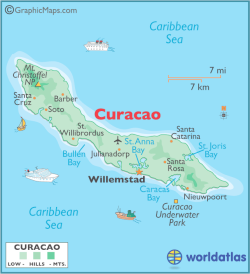
The island of Curaçao (Source: www.worldatlas.com)
Curaçao
Also Curaçao was attacked. The people were warned because the blaze on Aruba could be seen from Curaçao, 75 km away. In the early morning of 16 February 1942 a German submarine, the U-67, attacked the depot tanks and two tankers of the Shell refinery near Bullenbaai. The Surinamese gunner Marinus van Niel immediately returned fire and the U-boat disappeared. See also: A group of marines from Suriname, the Antilles and Netherlands Indies in the section of Suriname. the U-67 fired between 03.52 and 04.30 hrs (according to T.J. Los at cnoops.nl) four more torpedoes at the Dutch tanker Rafaela which had anchored 500 m. in front of the St. Anna Bay. One of them was a hit and caused severe damage, but the ship only sank in the harbour and no casualties occurred. The U-67 then returned on 21 February and sank near Westpoint the Norwegian oil tanker Kongsgaard. 38 of the 46 crew lost their lives.
Transport line
On 16 February the six other submarines of operation 'Neuland' seeked out their prey outside the harbours of Aruba and Curaçao. Only the U-502 succeeded. In the Gulf of Venezuela it torpedoed the British Lago tanker ss Tia Juna, making 17 deadly victims, among them seven Antilleans. Then it attacked the Venezolean tanker Monagas, leaving five dead, among them the captain. Finally it hit the British Lago tanker San Nicolas, with seven crew dead, among them four Antilleans. All three tankers sunk and were lost for further oil transport. For the Antillean victims see the paragraph on Seafarers.
The 16th of February 1942 was a black day. 27 Antillean seafarers lost their lives that day. That is 30% of the 88 Antillean losses between 1940 and 1945. Thirteen of the victims were from Bonaire, seven from Saba.
KNSM freighters
The attacks went on though. Between May and October 1942 thirteen KNSM freighters were torpedoed, with big or smaller losses of people and materials. They were the ss Astrea (6 March, by the Italian submarine E. Tazzoli), Amazone (6 May), Fauna (18 May), Hector (24 May), Triton (28 May), Poseidon (28 May), Crijnssen (11 June), Flora (18 June), Telamon (24 July), Draco (5 August), Strabo (10 August), Medea (13 August) and Achilles (1 October). For the Antillean victims see the paragraph on Seafarers.
Not only the oil supplies to the Allies were endangered but also the food supplies for Aruba and Curaçao, as well as employment.
Sailing ships
In May the Germans also sink two Domincan freighters, the San Rafael (3 May) and the Presidente Trujillo (21 May). They are vital to the food supplies for the islands. The Axis powers also attack sailing ships on the routes between Curaçao and the Dominican Republic: the Sally, the Gaviota and the Domincan Nueva Altagracia. The latter transported vegetables, fruit and, according to Kock, chickes. The U-161 only sank the sailing ship after crew, lifeboat and cargo were taken over (16 June). With the Sally and the Gaviota the crew was sunk with the ship. For the Antillean victims see the paragraph on Seafarers.
Food supplies
Just feeding 3000 Gunners, a task for lieutenant Henry Prince, was already a problem. The first nine months after March 1942 he used the Shell kitchens, after which their own military kitches were equiped. Lieutenant Prince made purchases at the only two 'supermarkets' on the island, one owned by ex KNSM captain Vreugdenhil and at supermarket Henderson, which once started for Shell. There also was an American shop, the PX-store. You needed relations to go there. For the other people on the island it was even harder to get food. In the ordinary shops there was little to choose from. Like Rdwan Baroud's father once said: "There was no more corn flower and so we could not make 'funchi'." Funchi is one of the dishes of Curaçao.
More rights for Antillean seafarers
Governor Wouters sees a strategy of the Germans in the ongoing attacks on any form of transport to the island. He sends an alarming cable to the London Government and asks the workers of the merchant navy to continue their jobs, despite the enormous risks. But the workers already feel unprotected after the first attacks - especially the Chinese stokers - and go on strike. Fifteen strikers are killed and the governor has to leave (see further on). But the importance of protection for the crew is noticed.
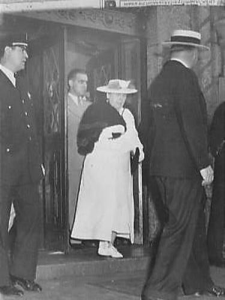
Queen Wilhemina leaves the Dutch Seafarers House in New York, 14-2-1942. (Source: gahetna.nl)
On 14 July 1942 Queen Wilhelmina promises the Antillean crews the same rights as the seafarers from the Netherlands. But it seems they have to wait for a while.
Reinforcment defences
The Schutterij ('gunners') are given more men, who are divided over three units: Artillery, Infantry and Administrative Services, including transport. At the south coast canons are placed along the eastern Caracas Bay and similar batteries are placed at the Steenrijk, the Blauwbaai and the Bullenbaai in the west. Also now in Willemstad near the Waterfort. The entrance of the Annabaai, more into town, with direct access to the Isla refinery, is closed of with a heavy steel net, which is only opened for non-enemy navigation.
At the end of 1942 the German U-boat fleet had destroyed 280 tankers and other vessels in the western and eastern Caribbean, a total tonnage of 1,300,000. It became clear that central organisation of the allied forces was necessary. The seriousness of the situation was made clear to the population as well. After the first attack all men between 18 and 20 years of age were ordered into service to defend the islands.
Sources
- Liesbeth van der Horst, Wereldoorlog in de West (World War in the West) (p. 23-26)
- Stetson Conn, Rose C. Engelman, Byron Fairchild, Guarding the United States and its outposts (Washington, 2000) (www.history.army.mil:80/books/wwii/Guard-US/ch16.htm)
- http://en.wikipedia.org/wiki/Attack_on_Aruba
- http://www.lago-colony.com/AMERICANS_IN_ARUBA/COAST%20ARTILLERY%20COMMAND.htm (William C. Gaines)
- www.seawingsnv.com, Antillean Navigator Number 56, part 1 and 2, by Adolf (Dufi) Kock (autumn 2012)
- www.Cnooks.nl (T.J. Los), De Nederlandse Shell-vloot tijdens de oorlogsjaren 1940-1945 (The Dutch Shell fleet during the years of war 1940-1945), and an e-mail on 2 July 2013.
Hazardous Shell tankers, strikers shot
Eight days after the German attack the Curacao Steamship Company (CSM), daughter of what later was to become Shell Curacao, wanted to send out another convoy of tankers to re-establish the connection between the Antillean refineries and Maracaibo. A Royal Decree issued in 1940 made it mandatory for the personnel to sail. However, the crews were afraid of U-boat attacks. In addition, the fleet of oil tankers was in poor condition, without rescue equipment, and Curaçao did not have things like shipping inspections, accident legislation, or survivors' pensions. On 24 February 1942, the major part of the crew, officers and stokers, refused to work. The officers withdrew their refusal, probably because their demands were met, but 450 stokers, many from Rotterdam, persisted in their strike. They did the heavy, hot work in the engine rooms and were trapped during a torpedo attack. They wanted a raise, payment of their legal war bonuses, and the promise that they would be repatriated to China after the war (Jean Mentens, Volkskrant 21 April 2008). On 12 and 13 March they refused to work once again - Chinese spokesmen were ordered to police headquarters at Wilhelmina Square - and the strikers now were detained at the Shell compound, near the American Suffisant base. Two days later the officers declared their solidarity with the strikers; then they were detained as well. Governor Wouters mediated, with the result that the tanker traffic started again on 27 March. The Chinese stokers however, were still imprisoned. When on 20 April unrest broke out about this treatment, police and company security interfered. Shots were fired and 44 Chinese were wounded. Twelve died immediately, three died later on. Their bodies were buried anonymously in the non-consecrated soil of the Colebra Berde cemetery, among non-baptized children, unmarried mothers, criminals and others considered to be sinners by the Catholic Church. The newspaper Amigoe wrote about the events and was prohibited from publishing for two days. Since 2000 the Foundation for Rehabilitation of Prisoners of War from Curacao (SEOC) has advocated for a memorial plaque and a worthy commemoration, in Curaçao as well as in the Netherlands. "Preferably at the Dam, with apologies afterwards." (Junnes Sint Jago, Volkskrant 21 april 2008).
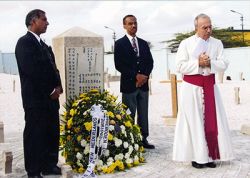
Monsignor Luis Secco and members of the board of the SEOC at the first consecration of Kolebra Berde to Honorary Cemetary and National Monument in April 2003 (picture: www.solidariteitzo.nl/pages/actueel-2007)
In April 2003 Kolebra Berde was consecrated for the first time by Monsignor Amado Römer, Bishop of Curaçao. The place where the bodies of 15 Chinese strikers were buried, was declared an Honorary Cemetery and National Monument in the presence of the SEOC, union chairman Wim van Lamoen, Monsignor Luis Secco, bishop of the Antilles and Aruba, and other prominent guests.
Below the names, year and places of birth of the 15 'Rotterdam-Chinese' are listed. In 2008 their names were placed by SEOC on the back-side of the memorial stone, which was erected earlier by the Chinese community.
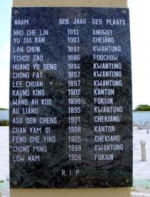 Memorial stone Chinese victimss |
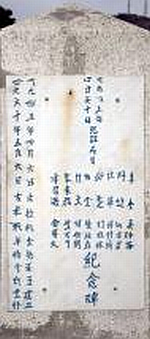 Kolebra Berde memorial stone, front-side |
| Name | Year of birth | Place of birth |
| 1. Nhu Che Lin | 1913 | Anhwei |
| 2. Yu Sio Kan | 1903 | Cheiang |
| 3. Lan Chun | 1897 | Kwantung |
| 4. Tchou Zao | 1886 | Foochow |
| 5. Huang Yu Seng | 1894 | Kwantung |
| 6. Chong Fat | 1897 | Kwantung |
| 7. Lee Chuan | 1897 | Kwantung |
| 8. Kaung King | 1902 | Kanton |
| 9. Wang Ah Kuo | 1896 | Fukiun |
| 10. Au Liang | 1895 | Kwantung |
| 11. Asu Sen Cheng | 1901 | Chekiang |
| 12. Chan Yam Si | 1908 | Kanton |
| 13. Feng Che Ying | 1905 | Chekiang |
| 14. Chong Ming | 1888 | Kwantung |
| 15. Low Nam | 1908 | Fukiun |
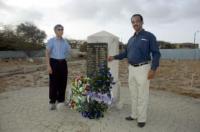
Unveiling of the names of Kolebra Berde
Sources:
- Ad van den Oord, Allochtonen van nu en de oorlog van toen (p. 43)
- http://www.solidariteitzo.nl/pages/actueel-2007.html
- interview with Nizaar Makdoembaks 8 April 2008 (http://antilliaans.caribiana.nl/innederland/car20080408_makdoembaks-oorlog).
- Pictures and names: www.nationaalmonumentcuracao.com/25-apr-08
- Also see: Press report Solidariteit Zuidoost (15 October 2008), 'Chinese Rotterdammers zijn ook nieuwe Nederlanders' (www.solidariteitzo.nl/pages/actueel-2008.html)
Atlantic Charter
The US presence had a liberating effect, both economically and culturally. Usually the black community was treated in traditional colonial custom. The Netherlands still had to get used to the Atlantic Charter (August 9, 1941), which stipulated (amongst other things) abolishment of colonialism after the war.
During the war, on 6 December 1942 (in Asia on 7 December), Queen Wilhelmina held a speech in London, during which - in vague terms - she promised a form of self-government to the Dutch East-Indies, Surinam and Curaçao.
Internment camps
Immediately after the German invasion in Holland, 41 suspected Dutch nazi-sympathizers (NSB) and over 200 Germans were rounded up and imprisoned on Bonaire. But, among the German captives there were also Jews and other anti-fascists. Many had fled from Germany and Austria. One of them was the family of the Austrian Otto Engelbert Sechtlerberger. Since 1929 Otto worked at Shell on Curaçao. The circumstances in the camp were very difficult. Provision of food was not regulated and at first a priest had to deliver bread. Men and women were separated by barbed wire, children did not receive any education.
In September 1942 the notables Maduro and Cohen Henriquez filed a petition to Queen Wilhelmina. They asked for an exchange of their sons George and Ernest, who were in a dangerous position in Holland, for Germans internees on Bonaire. The government did not agree. Two exchange-projects in 1943 failed as well.
After a while the Jewish men were shifted to a camp on plantation Guatemala, but not liberated. In September 1942 the Jews were allowed to return to Curaçao and Aruba, with restricted freedom of movement, and in March 1944 the Jewish Antillean community took over the care for the internees. In 1947 some of the internees were expelled on a one way trip to Germany. The camp in Bonaire was rebuilt as Hotel Zeebad and later on as the Flamingo Beach Club Hotel.
Visit by the House of Orange
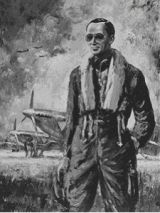
Prince Bernhard (Picture: www2.telegraaf.nl/bernhard/bernhard3/)
Prince Bernhard
The colonies of Surinam and the Antilles were the only parts of the Dutch Kingdom unoccupied by either Germany or Japan.
On 22 October 1942 Prince Bernhard, the husband of crown princess Juliana, flew from London for a visit to Curaçao, Aruba and Surinam, the first member of the Royal Family in a hundred years to do so. As the prince's plane approached, American artillery fired a shot. What happened was that the prince arrived in Curaçao a bit early and assumed that the reception committee would not be there yet. Therefore he decided to fly a circle around the island. One of the two American posts on the refinery grounds then fired a warning shot. The prince quickly flew off, landed at Hato airport and waited in the bar for governor Kasteel to arrive (Dr. J. Hartog, The fortressess, defence works and artillery works of Curaçao and Bonaire. Zaltbommel 1997 - in Dutch). Once the governor arrived, the Royal representative again, this time officially, disembarked from the plane. Press Chief and censor Mr. Eduard M. Elias, who arrived at the airport early, immediately forbid the press to report the incident; later he even called the head editors to make sure everyone complied with the ban. On October 24 the prince visited the oil refinery of Aruba and flew on to Surinam.
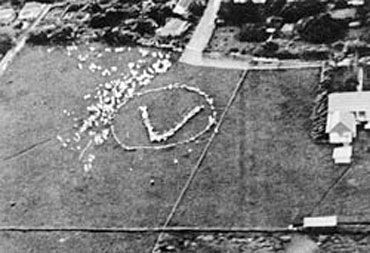
School children make a V-sign in an O, on Saba or elsewhere
(Source: www.verzetsmuseum.org))
Princess Juliana
From Canada on its way to Surinam, the KLM airplane De Meeuw flew on 2 November 1943 with princess Juliana aboard over Sint Eustatius and Saba. From the plane red-white-blue pamphlets were strewn with ‘best wishes for our common battle’. Accompanied by two American bombers the plane flew on to Surinam. In a film white dressed school children can be seen who form in big letters the O (Orange) and the V (Victory). Filmed above Saba? Or above Paramaribo, shortly before landing?
In February and March 1944 the crown princess visited Curaçao, Aruba, Bonaire and (half-French, half Dutch) Sint Maarten.
KNIL-military
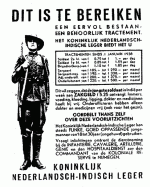
KNIL recruitment pamphlet (Picture: www.engelfriet.net)
In 1944 about 200 KNIL (Royal Netherlands-Indies Army) troops from Surinam and the Antilles were stationed in Australia and deployed against Japan. Their numbers were complemented by 200 volunteers from 'The West', mobilised Dutch from non-occupied areas and Papuans from New Guinea. Australia was not exactly a paradise for non-whites. At that time it very much resembled South Africa with it's 'apartheid' system.
Aid campaigns
During and towards the end of the war collections were held for the Netherlands. One of the collections, well known in both the East and the West-Indies, was the so-called Spitfire Fund, meant to acquire fighter planes for the allies. The Curaçaoan Ladies' Spitfire Fund managed in a short time to raise 5,200 English pounds, about 50,000 Dutch guilders at that time, as reported by philatelist Paul Daverschot. The book 'The Second World War in the West' also mentions the Ladies' Committee Princess Irene. It's fund raising efforts, also included a revue. According to Zita Moreno, who danced in the revue, special Spitfire songs were sung, like 'Spitfire in the air'. Spitfires acquired through this fundraising were given names of towns in the Netherlands-Indies, or named 'Suriname'. Along that same line the Spitfire bought with Aruban money was named 'Aruba'.

Stamp Prince Bernhard Committee (Source: Filatelie, October 2007).
On 11 December 1941, following the Netherlands-Indies and Surinam, the Antilles published a series of stamps with a surcharge. The proceeds went to the Prince Bernhard Fund, and was used to buy Spitfires, tanks etc. (source: Filatelie, October 2007). The Antilles also had an ABC-Baby Fund for undernourished Dutch children; warm clothes were sent to London and money was raised to buy six mobile kitchens.
Antillean musicians in The Netherlands
During the thirties a few Antillean musicians worked in Holland, especially in 'Negro Clubs' in the three big cities (Amsterdam, Rotterdam, The Hague). At the start of the war the Germans were not aware that there were non-Arians among the musicians. They had a Dutch passport and had registered with the 'Kulturkammer'. Later on this changed and the Germans also had a film made that spread a negative image of jazz: 'Barbarism', in which especially negro-musicians were targeted. Still, most black musicians could continue, not in the least because jazz was also very popular with many Germans.
The famous African-American pianist Freddy Johnson (New York City, 1904-1961) was playing in Holland during the mid-thirties. Herman Openneer writes: 'It is said that Johnson taught the Dutch how to play the piano'. The 'Quartet' named after him, included Mike Hidalgo from Surinam, Kid Dynamite, and the drummer Arthur Pay. Another drummer in the Freddy Johnson Quartet was the Antillean Martin Sterman. He was born in Amsterdam as the son of a white mother and an Antillean father from Curaçao. His brother Otto was an actor and recitor, his sister Annie a well known vocalist. They did not experience any problems. On 20 July 1944 Annie Sterman appeared under the name of 'Topsy', the 'West-Indian singer, tap and rumba dancer' in the 'Waakzaamheid' in Koog aan de Zaan, together with well known orchestra's and soloists from the Zaan area and West-Friesland. It was the day of the assassination attempt on Hitler.
War monuments in the Antilles
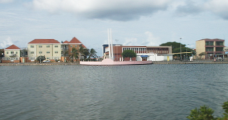 Monument in Bonaire (picture: Bregilio Wanga, www.lago-colony.com) |  Plaquette (picture: M.v.d.Veur) - (click to enlarge) |
M.R. Anthony, J.W. van den Belt, H.G. Bernabela, H.P. Bernabela, L.E. Bernabela, J.P. Boekhoudt, U. Boom, F.L. Capello, M.Th. Charlouis, C.B. Cicilia, N.A. Clarinda, A.C.P. Coffi, J.C. Coffi, T.M. Constancia, J.S. Cornett, J. Daanchi, Ch.M. Debrot, J.O. Dembrooke, P. Dijkhoff, G.L. Doran, J.L. Dortalina, J.W. Dunlock, S.J.R. Ecury, L.N. Emerenciana, G.L. Emnes, H.J.H. Forbes, L.H. Fridael, P.V. Goedgedrag, J.D. Goeloe, M.C.B. Gorsira-Gorsira, A.D. Granger, J.F. Haayen, J.A. Hart, T. Hartlief, M.C.B. de Haseth-Corsira, A.C. ten Have, G. ten Have, K. ten Have, N. ten Have, G. Hecker, C. van der Hoeven, M.A. van der Hoeven, W.O. Hooker, A.G. Hommerson,
M.B. Isijk, D.G. Janga, N.Th. Janga, E.J. Jansen, H.G. Jansen, K. de Jong, P. Joosse, A.M.W. Knevel, L. Kooyman, B.C. Kraal, J. Landenga, U. Landenga, E.E. Laveist, J.M. Layto, B.F. Leito, J. Lepelaars, L.W. Lepelaars, J. van der Linde, E.N. Linzey, H.L. Lodrigo, M.M. Lourens, D.K. Lynch, D.A.C. de Maagd, F.A. Maas, J.E.W. Maasdamme, G.J.L. (R.M.W.O.) Maduro, G.A. Manuela, R.C. Marchena, C.R. Martes, D. Martijn, H.B. Martijn, O.D. Martijn, Th.F. Martijn, A.B. Martina, P.A. Martina, H.N. Martis, E.A. Matrona, M.R. Matrona, J.A. Maxwell, C.A. van Mechelen, J.J. Mol, G.A.L. Muller, J.A. Statius-Muller, W. Neeleman, A. Nijdam, A.J. de Palm, H. de Palm,
F.M. Pannelek, A.G. Pieter, J.S.R. Pietersz, D.H.P. Pourier, J.C. van Putten, Ch.B. Rafael, G.R. Richardson, J.B. Rosalina, W.F. Rosaria, S. Rozeboom, A.H. Scheelbeek, L.B. Scherptong, S.M. Serberie, L.E. Smiet, C. Smit, E.A.J. Stelk, A.Th. Stoel, J.G. Thielman, A.F. Thode, S. Thode, P.B. Tjie Tjie, B. Tromp, J. Verhey, A.F. Verhoeks, J. Vogelenzang, J. de Vries, H. Wensing, M.G. Wensing-Hesseling, M.T.H. Wensing, J.V. Wessels, M.D.J. Wijngang, W.A. Winfield, A.C. Winklaar, A.I. Winklaar, C.A. Wilson, J. Wilson, A.D. Woods, en H.S. Woods.
Some names are not listed at the monument, but are mentioned on this page. It concerns the military M.C. Gandelman and four other Jewish victims, born in Curaçao. In the paragraph 'Seafarers merchant navy' 87 Antillean victims are mentioned, whether or not listed on the plaque.
The monument in Aruba is situated at the L.G. Smitboulevard. The monument in Curaçao is at the De Ruyterkade, in the form of a ship.
 War monument Aruba |  Middle and right: | 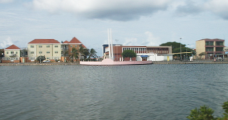 War monument Curaçao (pictures: J.Kooyman) |
Saba and St. Eustatius also have a monument with this plaque. On St. Maarten there is a war monument at the C. Wathey Square.
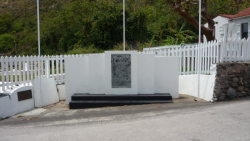 War monument Saba (picture: www.erepeloton.nl) | 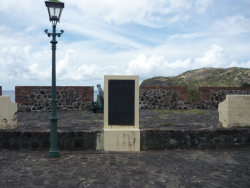 War monument St. Eustatius (picture: www.erepeloton.nl) |
Sources
- www.4en5mei.nl (ABC-eilanden)
- www.erepeloton.nl/grafgegevens/SJAEcury.html (Saba, St. Eustatius)
- www.slideshare.net/pearlstudio/meerjaren-monumentenbeleidsplan-stmaarten (St. Maarten).
Antillean victims of war
Segundo Jorge Adelberto (Boy) Ecury
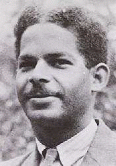
Picture: www.museenkoeln.de
Boy Ecury was born the 23rd of April, 1922 in Oranjestad, Aruba. He was the seventh child in a catholic family of thirteen children. His father was a well-established businessman. Boy first went to the Christian Brothers school on the island, but his parents took him out because they thought he was too rebellious. Together with his brother Nicky he was sent to the St. Augustin Military Academy in Puerto Rico. Because of their black skin the boys were not welcome there. Their parents then registered them in Holland, at the Brothers of St. Louis in Oudenbosch, a famous institute, which did not keep people in the streets from calling them 'niggers' sometimes. Boy obtained a commerce diploma.
Both brothers witnessed the May-days of 1940 and saw the ruins of Rotterdam. Boy came in contact with a fellow student from the Antilles, Luís de Lannoy, who lived in Tilburg and was a member of the student resistance. They wrote each other letters in Papiamentu on stationary with a portrait of William of Orange on it. Boy was athletic and a man of action. He often helped Luís in underground operations and set German trucks on fire. He joined the Oisterwijk Resistance Council. Boy made phosphorus bombs and used them to sabotage German trucks, destroyed a railroad track and offered help to downed allied pilots. When Luís de Lannoy was betrayed and arrested on February 10 1944, Boy tried to free him from the Utrecht prison, but the attempt failed.
Hans P. Gerritsen (Oisterwijk) recounts that he was brought into the Resistance Council around the end of May, early June 1944, by the members Linthorst, Brunnekreef and Van der Klei. Before that he had been in camp Amersfoort and he felt as though his life was over already. He recognised the same feeling in Boy Ecury. There was nothing to lose. For a couple of days they were together in the attic of a barn and in a hut behind the farm 'De Rozep Hoeve'. Because of his dark looks Boy Ecury drew quite some attention in Oisterwijk. And it was dangerous enough as it was for people in the resistance. From the beginning of October 1944 allied troops moved to the area around Tilburg. After consultation with commander 'Bim' van der Klei, Ecury moved to a hiding place in Tilburg. He made the impression of being very militant. On October 26 Oisterwijk was liberated by Scottish units. [With thanks to H. Gerritsen, February 2008, December 2013].
Despite the chance of liberation, Boy Ecury did not stay in the province of Brabant. He came in contact with the 'Knokploegen' (commando groups) in The Hague. They prepared underground-actions in Rotterdam, including the attempted murder of a member of the Dutch Nazi movement (NSB). On Sunday the fifth of November 1944, after attending high mass, Boy Ecury was betrayed and arrested in Rotterdam, right in front of the building of the Sicherheitsdienst (German security police). He was transported to the Scheveningen prison and on the sixth of November executed on the Plain of Waalsdorp in The Hague, the place where many members of the resistance were shot. In 1947 he was reburied in Aruba and in 1949 a statue was erected. In 1984 Boy Ecury posthumously received the Dutch Resistance Remembrance Cross.

Source: Allochtonen van nu en de oorlog van toen, p. 63-64
Picture: www.onderscheidingen.nl
What inspired Boy Ecury, as a young black man, to join the Dutch resistance?
His nephew Ted Schouten: “We tend to look at the war with today's eyes. When Boy Ecury went to Holland for advanced education in 1937, there were not many people of colour there. He was an exception, an attraction. The wave of de-colonisation had not swept the world yet. As yet there was no need in the Antilles for a 'status aparte' (separate but not completely independent country within the Kingdom of the Netherlands). And Holland was still untouched by criminal immigrants. Boy, descending from a wealthy family, thought of himself as a Dutch citizen. He had a rebellious character. Confronted with scarcity, misery, domination, discrimination and violence, he took an aggressive, even provocative stance against the occupiers."
In the early eighties, Ted Schouten, half-Dutch, half-Aruban (his mother was a younger sister of Boy Ecury) made a television documentary (for TeleAruba) about his uncle, the Aruban hero of the resistance in the Netherlands. In 1985 he wrote a book that was released in a limited edition of only 1,500 copies (see below).

The bust of Boy Ecury in Oranjestad
Boy gets attention in Aruba
Whatever possessed a young black man in Holland during the Second World War to join the resistance? This question, in particular, inspired Schouten to start an in-depth investigation. He found a treasure of historic material in his grandmother's camphor chest. He found out that his grandfather had done an extensive investigation into the death of his son. He even managed to obtain names and pictures from German soldiers.
Since November 1949 there is a statue of Boy Ecury at the Lloyd G. Smith Boulevard in Oranjestad. Occasionally, around the fourth of May, the documentary was played again in Aruba, but little attention was actually paid to the local war hero. The Second World War seemed a long time ago. In 2000 Ted Schouten, now living in Holland, received a phone call from the Antillean government to say that his book was going to be reprinted.
Museum, book and film
Today Boy Ecury has a central part in the new museum of war, where on the 20th of April 2005, crown prince Willem Alexander unveiled a memorial plaque. The National Committee May 4 and 5 called it a 'real revival of the Second World War in Aruba'.
The permanent exposition in the new museum of war in Oranjestad shows some of that history. The exposition is housed in a former bunker. The life of Boy Ecury also gets a great deal of attention.
Schouten: "The most important motivation for the museum probably is not the revived interest in the Second World War, but rather the interest from the tourism industry. Tourism now provides the main source of income for Aruba.
The government wants to offer its guests more than just sun and palm beaches. I don't mind, as long as there is room for Boy's story."
With co-operation from Ted Schouten a film was made about the life of Boy Ecury. The film, called ‘Boy Ecury’, was shot in the Beemster polder in Holland and was released in 2003. Director: Frans Weisz. Scenario: Arthur Japin. Cast: Felix de Rooy, Steve Hooi, Johnny de Mol, Gaby Milder, Sylvia Poorta. In 2003 the film won a 'Golden Calf' award and in 2004 an American Columbine Award as ‘best feature film’. (for a summary and pictures from the film see below)
Sources

Ted Schouten, ‘Boy Ecury, an Antillean boy in the resistance’ (ISBN 90-5730-242-X), Walburg Press.
Web: www.4en5mei.nl
George John Lionel Maduro

Picture: www.residentie.net
Officer George John Lionel Maduro was born in the capital of Curaçao, Willemstad (July 15, 1916), grandson of the founder of an influential Jewish firm S.E.L. Maduro & Sons. He was a law student at the University of Leiden when the Germans invaded The Netherlands on the 10th of May 1940. His last known adress was Frederik Hendriklaan 111, The Hague. At the time he was living there his profession was private tutor (www.joodsmonument.nl).
As reserve-officer (2nd lieutenant) of the Hussars he was put into action in the area surrounding The Hague, at the Old Toll bridge over the Vliet river amongst other places. He distinguished himself in the attack on German paratroopers in the villa Leeuwenberg in Rijswijk.

The explanation of why he was posthumously awarded the Military Order of William reads:
"Distinguished himself in battle on May 10, 1940 by superior acts of courage, ingenuity, and loyalty. As Commander of a platoon of young soldiers, he planned and prepared, with great skill and on his own initiative, the attack on the enemy-occupied villa 'Leeuwenburg' behind the Vliet in RIJSWIJK. With great courage, leading two groups of soldiers, he crossed the bridge over the Vliet while under enemy machine-gun fire, personally led the attack on the fortified base (Villa 'Leeuwenburg'), and in the assault was the first to force his way in, breaking the resistance and taking the occupants prisoner."
In March 1942 the German occupiers forced all reserve-officers to report them. Maduro did not comply and went underground at the house of relatives of a fellow student. He joined the resistance and helped allied pilots escape via a southern route to Spain and Portugal. At the end of June 1943 he himself also left for Spain. He was betrayed and apprehended by the Germans near the Belgian-French border (Charlesville) and, since he was in the military, interned as prisoner of war in Saarbrücken.
In September 1942 George's father, Jossy M.L. Maduro, filed a petition to Queen Wilhelmina asking for an exchange of his son for Germans interned on Bonaire. A similar petition was filed by the father of Ernst Cohen Henriquez. However, the government did not agree. More than a year later, in November 1944, because of the allied advance, George was transferred to the concentration camp Dachau, where he died of typhoid on February 9, 1945.
The Dutch military who fell in the battle for The Hague received a statue at Sorgvliet. George Maduro received a special monument. In 1952 his parents, Jossy and Rebecca, with support from business contacts and an architect, founded Madurodam in his memory. In this miniature city the finest buildings in Holland are rebuilt on a scale of 1:25. George's house of birth can also be found in Madurodam. It was built in 1895 in a Palladian style, marked by harmony and simplicity.
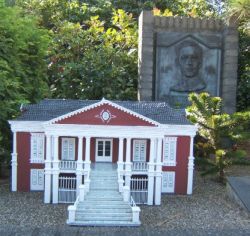
At the entrance of Madurodam there is a special memorial to George Maduro, the only Antillean to receive Holland's highest decoration, the Military Order of William.
In 1991, during their annual reunion, former Dachau prisoners unveiled a bronze plaque with the inscription:
In memory of our fellow-campmate
George J.L.Maduro R.M.W.O
born July 15, 1916 in Curaçao,
died on February 9, 1945
in concentration camp Dachau.
Circle of friends, former-Dachau prisoners.
April 27, 1991
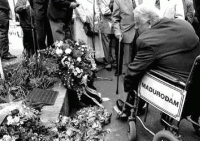
Picture: www.dachau.nl
On a wall of the firm S.E.L. Maduro & Sons in Curaçao, a bronze plaque is mounted explaining why he was posthumously given the Military Order of William (see above). In addition, there is a line from a letter by Queen Wilhelmina to his parents: "with pride I'll remember his actions".
Sources:
www.onderscheidingen.nl
homepage.residentie.net
weblog.donamaro.nl
www.dachau.nl
Allochtonen van nu en de oorlog van toen p. 62
Isaac S. and Suzanne A. Emmanuel, History of the Jews of the Netherlands Antilles. Cincinnati 1970 (p. 501, 1103)
Other Antillean Victims of War
Military victims
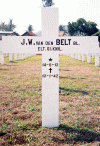
Grave of J.W. van den Belt (Picture: www.ogs.nl)
Jan Willem van den Belt, born in Willemstad, Curaçao, on August 14, 1913, died at Tarakan on January 12, 1942. During this period this island north-east of Borneo (now Kalimantan), was the stage of battles between units of the Royal Dutch-Indies Army (KNIL) and the Japanese attackers. The oilfields of Tarakan produced 6 million barrels a year. It was the first Japanese attack on the Dutch East-Indies. According to Wikipedia there were 700 oil wells on and around the island. There was a refinery and an airfield. The Japanese attack was specifically aimed at the oil resources of Tarakan and Balikpapan, 700 kilometres south of Tarakan. The Netherlands-Indies troops in Tarakan, about 1,300 men, comprised two platoons of engineers. Jan Willem van den Belt was a first lieutenant here and directly involved with the destruction of the oil installations.
Capitulation
After fierce resistance against a superior force of about 6,600 Japanese, the garrison surrendered on 12 January. During the days before the submarine K-X had escaped (see www.dutchsubmarines.com; also see Jan Frederik Haayen*); the minelayer Prince of Orange was torpedoed. W.J. Jongkind, drilling master trainee in the Netherlands-Indies (1939-1942), and after the war husband to a Tarakan nurse, tells the following story about the defence of Tarakan:
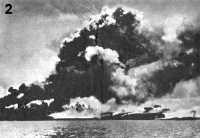
Burning oilwells at Tarakan (picture: www.voeks.nl)
"A destruction unit trained for this purpose entered the oil fields and destroyed all installations. One of the Dutch men later said: "The noise of the battle was lost in the noise of the fire. The air filled with smoke with flames flashing through. Thirty years of work out the window. And commander De Waal, who tried his best to keep up the morale, shouted: "Who would ever have thought that a poor officer would spend 30 million guilders in one night." The Dutch kept the Japs at bay until the second part of the destruction plan could be completed. That was the destruction of the large oil tanks which carried about 100,000 tons of petroleum. These were also set on fire. The fierce noise of the flames drowned out all other sounds, a witness reported. "It was an awful sight; burning oil flowing slowly towards the coast through the canals we made. Everything in the vicinity was lost, the tarmac roads, the houses, the harbour installations - and the burning oil flowed quite far into the sea", he said. Two days after the Japanese landing the destruction was finished and commander De Waal and his battered troops surrendered. Among them were 40 women, the wives of Dutch and Indonesian soldiers and nurses. They refused to leave Tarakan when it became a battle ground because they wanted to take care of the wounded. After the surrender these women expressed their great joy about the fact that they could go on with comforting and nursing these men in their captivity". (voeks.nl, Herinnering 30-6-2007). Shell employee Jongkind escaped imprisonment and reached on 14 February 1942 in a USA flying boat Darwin, Australia.
Red Cross helpers
Anita (‘Nita’) van den Belt-Hoolboom (Soerabaja, 4 April 1918) belonged to these women. Anita lived already some time in Tarakan Ladang, and wished as a Red Cross volunteer to help nursing the patients of the militarized hospital. This was owned by the Bataafsche Petroleum Maatschappij (BPM). Together with nurse Siti Rohana and other Red Cross helpers such as Mrs A. Colijn-van de Poll, Mrs M.E. Greter-Wolterbeek and sister M.A. Bast-Strijbosch she stayed with the patients, without going to the shelter during shootings and bombardments.
Eyewitnesses
J.W. Beltman, a member of the military staff, wrote a report of what happened in Tarakan for his superior, captain Reinderman. About the hospital he noted: "Between our setups and the enemy was the hospital, full of wounded, with the sisters staying there. Also, there were sad scenes played out. Lieutenant VAN DEN BELD had been killed and carried into where his wife worked as a nurse". (mobe.nl/tarakan).
Red Cross helper 1st class (nurse) Mrs Gesina (Gé) Bakker-Broerse of the Military Hospital of Tjimahi happened to be there. With 17 other Red Cross helpers she flew in the last days of 1941 from Bandung to Tarakan. During the whole period of Japanese occupation she kept a diary. Her daughter Ineke made an extract for a war site. In the part about the conquest of Tarakan Gesina writes: "In the moment I work with Mrs. (Nita) v.f. Belt, Lt. V.d. Belt’s wife, of the engineer troops, who was killed in that unforgettable Sunday night of 11 January. I saw him brought in here on Monday morning after the surrender but he was already dead. Shot straight through the head. Also Nita saw him but stood still, paralyzed, when she saw that it was him, and when she saw that they bore him into the m.(ortuary) she succumbed. I couldn’t catch her, cause the bier went in between the two of us. These things are indescribable, to write down what one feels in that moment. Also captain [M.J.] Bakker, Tieffers and many others came in in the same way, sometimes unrecognizable – and then knowing that they made out just around 1/10 of what laid still in the field. The bearers refused flatly to get them inside. We were forbidden to go out." (see Sources, mobe.nl/tarakan).
Reprisals
As punishment for the destruction of the oil installations, and most of all, because of the success of two Dutch defense groups, who impossibly could be reached with the decision of capitulation and in the mean time sank two Japanese mine-sweepers, with 200 casualties, the 215 men of the two battalions brutally were murdered by the Japanese army on 19 January. Two surviving Dutch who had been made prisoner before, captain Reinderhoff and Shell employee Anton Colijn, the day before, had managed to be sent to the refineries of Balikpapan, to tell them about the Dutch defeat. It was a trick. Their mission meant that the oil installations there too could be destroyed.
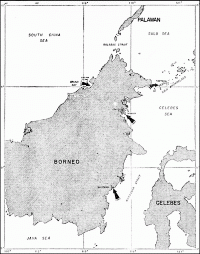
Borneo 1945 (picture: www.ibiblio.org)
Brunei (upper arrow), Tarakan (middle), Balikpapan (lower arrow)
Women in camps
After the battle of Tarakan most women were deported to a camp close to the hospital. Also the Group of Gesina arrived there, om 8 March. But first on that day five of the youngest women, together with two women who were already interned, despite a collective refusal, were brought to the Club of Japanese officers. Gé, and maybe Nita van den Belt as well, stayed at work in the hospital. In the months of July-August the group with Gesina was interned in the police-kampung Linkas. On 11 February 1943 the group officially became prisoner of war and got Japanese watchmen (‘kempetai’). At the end of 1943 the Dutch women went in an overcrowded ship to Banjermasin, also on Borneo. There they lived with other women who were at the disposal of the Civil Administration, under control of the kempetai. In the beginning of 1945 the women were loaded onto a lorry and transported to the Kandangan camp. Here the circumstances were very bad. Only on the 30th of August they heard that Japan had lost the war. That fall Gesina Bakker via Balikpapan was admitted to an Australian hospital (Melbourne). One year later she was in Batavia/Djakarta. Presumably Anita van den Belt-Hoolboom traveled a similar road during the war. Between 28 December 1945 and August 1946 she stayed in a hospital in Melbourne (Australia).
Distinctions
As lieutenant of the engineers Van den Belt was probably mainly responsible for the destruction of the installations and was that the reason for being shot straight through the head. Posthumously Van den Belt received the distinction of the Bronze Lion. This second highest military distinction is given for acts of great bravery and ingenuity. Jan Willem van den Belt is buried at the large field of honour in Leuwigajah near Bandoeng (Java).
His wife, Nita, together with the above mentioned Red Cross helpers and the Chinese driver Tan Sen Soe, was nominated after the war for the Dutch Cross of Merit, 'because of her heroic behaviour' (Archives Government Dutch East-Indies). It is unclear though whether in these chaotic times the distinction was granted to her. Only in the case of Aaltje Colijn-van der Poll, who was married to a son of the former Dutch prime-minister Colijn, it is certain.
Additional sources:
- www.onderscheidingen.nl
- en.wikipedia.org
- www.voeks.nl (former employees Koninklijke Olie and Shell)
- www.geocities.ws/dutcheastindies/balikpapan_massacre.html
- e-mails Peter Graham Row, July 2014
- www.flickr.com/photos/erfgoedinbeeld/4976714482 (Archieven Gouvernement van Nederlands-Indië (1944-1950))
- nl.wikipedia.org/wiki/Anton_Colijn
- www.pulkvision.nl/sites/default/files/tarakan/index.html
- www.mobe.nl/tarakan/pdf/doc_beltman.pdf
- www.mobe.nl/tarakan/slachtoffers/bakkerbroerse/
- recordsearch.naa.gov.au/scripts/
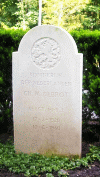
Grave C.M. Debrot (picture: www.ogs.nl)
Charles Marius Debrot, born in Curaçao, March 17, 1920, died May 10 1940 in the battle for the airport Ockenburg in Loosduinen/The Hague (for this battle see also Maduro). He was reserve sergeant of the Regiment Jagers (1-I), and was reburied after the war on the military field of honour the Grebbeberg near Rhenen.
Additonal source: vliegveld-ockenburg.net
Mordechai ('Marco') Chaim Gandelman
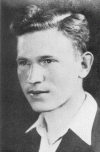 Marco Gandelman (Picture: Gandelman family) | 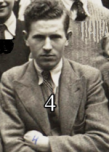 Marco Gandelman (Picture: Herbert Markus) |
Marco Gandelman was born in 1919 in Rumania, in the town of (Noua) Sulita. His parents were Haim and Ana Gandelman. His younger brother was named Moses (Morris), his sister Basia.
Bukovina
Today the town is named Novoselitsa (also written as Novoslytsya or Novoselysia) and lies in Ukraine, in the province of Chernivtsi, at the border with Rumania. Between 1775 and 1918 the town and its region Bukovina, belonged to the Habsburg Empire. Around 1900 70% of its citizens, four thousand people, were Jewish. After de defeat of the Habsburg Empire in 1918, the region became a part of Rumania. Jews were not considered anymore as civilians, but as Russians and Bolsheviks. There was a lot of anti-Semitism and it became more difficult to get a decent living. During the twenties, citizens who had the means to left Noua Sulita. A number of families tried their luck in South-America. The Gandelsmans were one of them. Like the Zonenschains, the Libmans and a dozen others, they ended op in Curaçao. A lot of tankers called at the island.
Curaçao
Together with families who emigrated from Poland, the Bokovians founded an Askenazi community on the island. They were called 'Polakos'. The community soon flourished, sometimes helped by the old Sephardi community. In Willemstad they opened their own shops, a club and, in the Bargestraat, a shul (synagogue). Ana Gandelman started a kosher eating-house at their family home in the Columbusstraat, where her husband had a small library with Yiddish books.
Marco
Haim and Ana Gandelman sent Marco and Morris to the Hendrik School, on the island the school for extended primary education (ULO). During religious classes Morris played chess with Sloima Zonenschain, a friend from their time in Noua Sulita. The oldest son was sent to Holland to the Joodsche HBS (pre-university school) in Amsterdam. Marco is nr. 4 in the school picture of 1937, when he was 17-18 years and in the fourth or fifth grade (nr. 4). Acoording to the list with school payments, 'Mordhai' Gandelman lived with Mrs. S. Cohen-Brandon, Kastanjeplein 3. She was a widow and had three sons and two daughters. Marco's class mate Johann Benjamin Hiegentlich (school picture nr. 6) also rented a room at her place. Marco's father's address was Columbusstraat 20 in Willemstad, Curaçao.
Yeshiva
According to the family Marco had a Jewish religious education, at a ‘yeshiva’, in Amsterdam. He was sponsored by the Sephardic synagogue in Willemstad. Father Haim had died that year, as the second one from the young Ashkenzi community, and was buried on the Sephardic Beth Haim. Possibly the Yeshive was the Portugese-Israelic Seminary Ets Haim, which traditionally also was called a yeshive.
Prisoner of war In November 1945 the Red Cross reported that Mordechai had been held prisoner in Germany, Stammlager VIII (nr. 46030), which means he was being treated as a military prisoner. This Stammlager is called Cieszyn (Teschen) and is situated 30 km south-west of Auschwitz, on the Polish-Czech border. According to family members in Curaçao and Peru, Mordechai died in this prisoner-of-war camp. After the war, an Antillean who was also held prisoner there, Isac Yohai, reported that Mordechai died of typhoid. From his housemates at the Kastanjeplein only Samuel Cohen, son of the landlady, survived.
Continuation
Moses Gandelman became a member of the Curaçao Chess Association. He married Fanya Becher. Basia married Sender Bitterman. In 1984 Moses joined the board of the Sephardic Synagogue, or 'snoa', the Mikve Israel Emmanuel.
Sources:
- Isaac S. and Suzanne A. Emmanuel, History of the Jews of the Netherlands Antilles. Cincinnati 1970, p.501
- Information by Fanya Gandelman-Becher and Basia Bitterman-Gandelman (2005), by Herbert Markus (November 2010) and by Samuel Cohen (January 2011)
- Jeannette van Ditzhuijzen, Een Sjtetl in de Tropen, De Asjkenazische gemeenschap op Curaçao (A Ashkenazi Shtetl in the Tropics, The Ashkenazi community in Curaçao) KIT Amsterdam (2010)
Jan Frederik Haayen, born in Willemstad, Curaçao, April 3, 1919, a lieutenant at sea 2nd class, died on the 15th of December 1941 in the South Chinese Sea, together with almost the entire crew of the submarine O16. It is unknown when Haayen became a crew member.
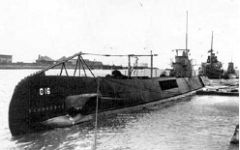
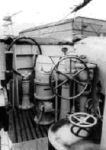
Submarine O16, the bridge (picture: www.dutchsubmarines.com)
Her Majesty's submarine O16 was built between the end of 1933 and early 1936 at the Schelde shipyard in Flushing, The Netherlands, and was the first one made of steel (see wikipedia.org). In 1939 the O16 was attached to the Netherlands-Indies fleet. It left Den Helder on the 24th of April and arrived on the 5th of June. Stock harbours were Tandjong Priok and Surabaja. At the end of 1941 the O16 was assigned to the first division of the submarine flotilla, which consisted of a total of 15 operational ships. Despite many losses, the flotilla would become very successful (see www.dutchsubmarines.com). Lieutenant at sea 1st class A.J. Bussemaker was the commander and the O16 was his flagship. Home port was Sambas in Borneo, near the border with the British part of the island and across from Singapore.
On December 1, 1941, the first and second divisions of the flotilla were placed under British command. The Japanese threat on Netherlands-Indies oil resources was to be repelled with British(-East Indian) and Australian help (see Van den Belt at Tarakan). Singapore became the home port. The O16 and the K XVII had to patrol the eastern coast of Malakka (now Malaysia) in the South-Chinese Sea. The first patrol took place on 6 December. A day later Japan started the surprise attack on Thailand, Malakka, Shanghai, Hongkong and Singapore, and destroyed the American fleet in Pearl Harbour. The exiled Dutch government followed the United States and declared war on Japan. Now it had become a straight wartime patrol. The O16 and other Dutch submarines in Singapore were ordered to disrupt the expected Japanese invasion in Malakka and Thailand. The Japanese started on 8 December with bombardments and landing troops near the Malaysian coastal town of Khota Baru and the nearby Thai harbours of Pattani and Songkla. The British cruisers Prince of Wales and Repulse were destroyed by Japanese bombers on the 10th of December. Despite the enormous success of the Japanese blitzkrieg, the O16 managed to damage the troop transport ship Ayatosan Maru (9788 tons) and/or the Sakura Maru (7170 tons). The soldiers landed in Khota Baru on the 8th of December. Two days later the O16 attacked several Japanese ships in the shallow bay of Pattani on the east coast of Thailand; by that time they also had finished landing the troops. The Tosan Maru (8666 tons), Asosan Maru (8812 tons) and Kinka Maru (9306) partly sank. Later they would be repared. Cornelis de Wolf later reported: "On the 10th of December we observed a Japanese merchant ship which carried a light on the rear stern. This blunder made it easy for us to follow the ship to the bay of Patani. Commander Bussemaker decided to enter the bay... There were four Japanese ships which formed a crescent. First we took a shot at the bow and then at the stern. We used six torpedoes which all were full hits! The ships sank only partially though, because the bay was not deep enough, 8-10 meters... We managed to leave the bay unseen and set course to Singapore." (www.dutchsubmarines.com)
On the 13th of December the O16 returned with one torpedo left. Two days later, at 2.30 hours, the submarine hit a Japanese mine near the island of Tioman. On the 7th of December the Japanese had laid a line of seamines near the entrance of the Gulf of Siam (now Gulf of Thailand). Around the 21st of December the K XVIII would hit the line, with fatal consequences. The O16 almost split in two and sank. All but one of the 42 crew members died. Most of them, including Jan Frederik Haayen, died or drowned immediately. A little more is known about five of the men. Bosun Cor de Wolf reports:
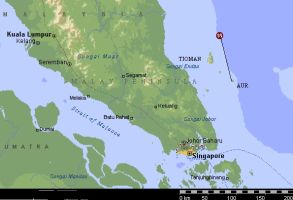
Location wreck O16, 200 km above Singapore (picture: www.dutchsubmarines.com)
"On Sunday the 14th of December, around midnight, I took over the watch on the bridge as a helmsman. There were six of us. We were all focused on flashes of light in the distance. There was probably a battle going on. At about two o'clock in the morning we saw a search light just above the horizon. The commander changed course ... and went straight for the light, somewhere near the island before the coast of Malaysia. It happened around 2.30 hours. A thunderclap smashed me against the wall. Within a minute our dear O16 disappeared in the waves. I saw the commander and an officer trying to close the hatch from the gun dome, and I myself was desperately trying to free my jacket from the debris of the mine in which it was stuck. The jacket tore and I landed in the water, alone." Cor found four more men alive and they started swimming towards the island of Tioman: lieutenant at sea 2nd class Jeekel, engineer corporal Bos and seamen Van Tol en Kruijdenhof. One after the other they had to give up and drowned, after 18 hours Bos drowned as well. De Wolf persevered and after another 20 hours of swimming he managed to reach an uninhabited island off the coast. A boy with a boat who accidentally happened to pass by rescued him. The villagers came to his aid. A number of them fleed from the Japanese and after a long journey through the jungle they found an Australian reconnaissance scout who brought Cor de Wolf to Singapore. The Japanese attack moved on and Singapore fell on the 15th of February 1942. The submarine flotilla stayed in action operating from Java and later on from Australia.
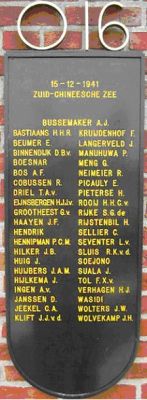
Plaque at the naval base in Den Helder (picture: www.ogs.nl)
Additonal sources:
www.unithistories.com/units_index/default.asp?file=../units_dutch/navy_gunboats.asp)
www.dutchsubmarines.com/men/men_dodenherdenking_2003.htm
www.wikipedia.org
Carel Zacharias de Haseth (Curaçao, 1908-1979) obtained his first mate's diploma in naval college and worked as a pilot in Curaçao. During the mobilization in 1939 he joined the Dutch army. He witnessed the capitulation and subsequently joined the resistance. De Haseth was arrested and deported to a Polish labour camp. He was liberated by the Russian army.
George R. Henar (Aruba/Surinam, 1902-1978). Major engineer of the Royal Navy aboard HMS 'Flores'. During the May-days of 1940 the Flores was anchored near Flushing. On the 14th of May it assisted the stronghold in Zuid Beveland with artillery fire. On the 17th of May 1940 the Flores (together with the Van Meerlant) managed to escape to Dover in England. During the first years of war the Flores served mainly in convoys. In total the Flores escorted 3,070 ships, 2,690 of them along the eastern coast of England. On the 4th of June 1943 the Flores left for the Mediterranean to join Operation Husky, the landings on Sicily. Here she joined HMS Soemba. Both ships distinguished themselves by cold-blooded firing at various targets. The allies called the two gunboats the 'Terrible Twins'. IN January 1944 the naval ships assisted with the landings at Anzio and Formia. In March they returned to England to prepare for the invasion of Normandy. Meanwhile, on the 9th of March 1944 in London, the crew members were given the Bronze Cross by Queen Wilhelmina. During the invasion of Normandy the Flores started in the Gold-sector. They disabled a German battery near Arromanches.
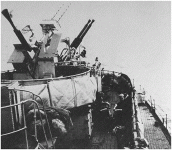
HMS Flores off the coast of Normandy (picture: www.strijdbewijs.nl)
From 12 to 30 June the Flores assisted in the Sword-sector. On the 7th of August the gunboat returned to England, where it was laid up in Shadwell Basin until March 29, 1946. On the first of April 1946 HMS Flores returned to the Netherlands. George Henar stayed in the Navy and served as a lieutenant at sea. He also received the War Remembrance Cross.
Additional sources: www.onderscheidingen.nl, www.wikipedia.org, www.strijdbewijs.nl
Wilhelmus Siegfried van Meeteren from Curaçao (1918), like George Maduro also in the military in May 1940, was taken prisoner of war. After his release he studied economics at the Rotterdam Economic Academy. In order to keep the family of his sister, where he stayed, out of harms way, he reported for the ‘Arbeitseinsatz’ and via camp Ommen landed in Berlin (compare Hugo van Win, paragraph Gays in war and resistance). In the factory he worked together with Polish, Russians, Italians and French. He also worked as an interpreter. There he developed a different view of colour and racial prejudice which was also widespread in the Antilles.
Henny Veeris (Curaçao - Netherlands May 1940). Henny died while serving in the Dutch army during the German invasion.
Cornelis Macarius [Cornelio Macario] de Windt (Willemstad, 1926). See: A group of marines from Suriname, the Antilles and Netherlands Indies, in the section of Suriname.
Seafarers merchant navy, killed during WWII
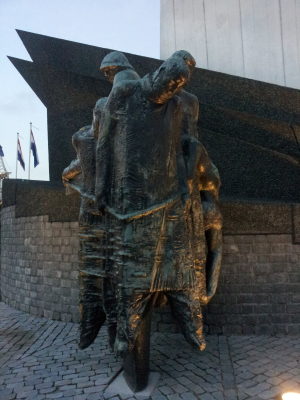
Monument merchant navy 'De Boeg' (Source: Pim Ligtvoet)
In total 62 seafarers of the former Netherlands Antilles are mentioned (August 2013) on the website of the Oorlogsgravenstichting (War Graves Foundation). Save four persons, they match the names on the plaque of the war monuments, which were revealed on 4 May 1957 on the six islands.
Plaque war monuments
The plaque mentions 129 victims, 64 of them with an Antillean background. Their names are listed below in bold. At the moment six of them are not mentioned with the Wargraves Foundation. Seafarers with a Dutch nationality or from Suriname are also mentioned on the plaque. The former are not discussed here, the latter are listed on this website in the paragraph of Surinamese seafarers (Emnes, Maasdamme, Smiet and Stelk).
| M.R. Anthony, J.W. van den Belt, A.H.G. Bernabela*, H.P. Bernabela, L.E. Bernabela, J.P. Boekhoudt, U. Boom, F.L. Capello, M.Th. Charlouis, C.B. Cicilia, N.A. Clarinda, A.C.P. Coffi, J.C. Coffi, T.M. Constancia, J.S. Cornett*, J. Daanchi, Ch.M. Debrot, J.O. Dembrooke, P. Dijkhoff, G.L. Doran, J.L. Dortalina, J.W. Dunlock, S.J.R. Ecury, L.N. Emerenciana, G.L. Emnes, H.J.H. Forbes, L.H. Fridael, P.V. Goedgedrag, J.D. Goeloe, M.C.B. Gorsira-Gorsira, A.D. Granger, J.F. Haayen, J.A. Hart, T. Hartlief, M.C.B. de Haseth-Gorsira, A.C. ten Have, G. ten Have, K. ten Have, N. ten Have, G. Hecker, C. van der Hoeven, M.A. van der Hoeven, W.O. Hooker, A.G. Hommerson, M.B. Isijk, D.G. Janga, N.Th. Janga, E.J. Jansen, H.G. Jansen, K. de Jong, P. Joosse, A.M.W. Knevel, L. Kooyman, B.C. Kraal, J. Landenga, U. Landenga, E.E. Laveist, J.M. Layto, B.F. Leito, J. Lepelaars, L.W. Lepelaars, J. van der Linde, E.N. Linzey, H.L. Lodrigo, M.M. Lourens, D.K. Lynch, D.A.C. de Maagd, F.A. Maas, J.E.W. Maasdamme, G.J.L. (R.M.W.O.) Maduro, G.A. Manuela, R.C. Marchena, C.R. Martes, D. Martijn, H.B. Martijn, O.D. Martijn, Th.F. Martijn, A.B. Martina, P.A. Martina, H.N. Martis, E.A. Matrona, M.R. Matrona, J.A. Maxwell, C.A. van Mechelen, J.J. Mol, G.A.L. Muller, J.A. Statius-Muller*, W. Neeleman, A. Nijdam, A.J. de Palm, H. de Palm, F.M. Panneflek*, A.G. Pieter, J.S.R. Pietersz, D.H.P. Pourier, J.C. van Putten, Ch.B. Rafael, G.R. Richardson, J.B. Rosalina*, W.F. Rosaria, S. Rozeboom, A.H. Scheelbeek, L.B. Scherptong, S.M. Serberie, L.E. Smiet, C. Smit, E.A.J. Stelk, A.Th. Stoel, J.G. Thielman*, A.F. Thode, S. Thode, P.B. Tjie Tjie*, B. Tromp, J. Verhey, A.F. Verhoeks, J. Vogelenzang, J. de Vries, H. Wensing, M.G. Wensing-Hesseling, M.T.H. Wensing, J.V. Wessels, M.D.J. Wijngang, W.A. Winfield, A.C. Winklaar, C.A. Wilson, J. Wilson, A.D. Woods, en H.S. Woods. * written differently and/or mentioned twice |
Antillesatwar.com
Mister Jos Rozenburg, captain-lieutenant of the Royal Dutch Marine, recently newly researched the National Archives of Aruba, Curaçao, The Hague and Washington, for those victims of the Second World War who had a direct relationship with the Antilles. The interim results - a book is being prepared - are published at the website www.antillesatwar.com. Also seafarers with the Dutch, American, Venezuelan and other nationalities are listed here. The site of Bevrijding Intercultureel addresses only victims with an Antillean background of whom another 20 are mentioned which are not listed on the war monuments in the Antilles. That brings the total persons to 88. Together with the four persons of ogs.nl there are 24 victims not mentioned at the plaque of 1957.
Victims of and during the war
Antillesatwar.com distinguishes between 'victims of war' (died during acts of war) and 'other victims' (died or missing during the war period). The war monuments in the Antilles, the Wargraves Foundation and the KNSM-monument usually concern with the latter, wider definition, as this website does. The 7 newly found 'victims of war': R. Gordon, L.P. Hernandez, J.M. Josefa, M.M. Lourens, E.I. Maduro, C.A. Simmons, E.O. Winklaar as well as the 17 newly found 'other victims': D. Albertus, P.A. Bomba, J.S. Calmes, J.J. Curiel, Th.J.B. Curlingford, J.A. Evertsz, L.G. Italia, B.J. de Jesus, P.M. Martes, P.W.H. Martijn, F.M. Martis, F.G. Montanus, J.M.S. Raas, J. Rasmijn, F.A. Scharbaai, R.A. Schotborgh and Th. Wilson, are mentioned and described at this site.
Americans and Chinese
Among the total of 88 Antillean seafarers who died during the war of 1939-1945 by acts of war or died during their service, there are three Antillean men in US-American service. One of them, P.V. Goedgedrag, is on the plaque of 1957. The other two are L.P. Hernandez and J.J. Curiel. Also there are two Chinese victims mentioned here, because of their important position in the Antillean merchant navy and the uprising of February 1942 (see Antilles during WO II). They are Fa King and Yong Ah Chong. At this time nothing is known about female victims.
KNSM-monument
30 Antillean seafarers worked on a ship of the Koninklijke Nederlandse Stoomvaart Maatschappij (KNSM): the Amazone, the Clio, the Crijnssen, the Hector, the Medea, the Notos, the Poseidon, the Pygmalion, the Socrates, the Triton and the Tiberius. 23 seafarers, all from Aruba, Bonaire or Curaçao, are on the KNSM-monument in Amsterdam. Their names are listed below in italic. Ch.B. Rafael is named here Ch.B. Martina, and R.A. Schotborgh here is R.A. Merced. Seven other KNSM-seafarers are not taken down at the KNSM-monument. They are U. Boom, B.J. de Jesus, J.M. Josefa, F.G. Montanus, S. Thodé and E.O. Winklaar. Their names are in italic and underlined.
Seafarers per island
Per island the following picture emerges of the war victims among the Antillean seafarers: 4 victims from Aruba (1 KNSM), 33 from Bonaire (7), 31 from Curaçao (16), 14 from Saba, 3 from St. Eustatius and 3 from St. Maarten. This information dates from Augustus 2013.
| Aruba | Dijkhoff, Rasmijn, Tromp, Verhoeks |
| Bonaire | Bernabela H.P., Boekhoudt, Bomba, Cicilia, Clarinda, Coffi A., Coffi J., Emerenciana, Evertsz, Goedgedrag, Goeloe, Hart, Janga D.G., Josefa, Marchena R.C., Martes P.M., Martijn D., Martijn H., Martijn O., Martijn T., Martis F.M., Martis H.N., Palm A. de, Palm H. de, Pieter, Rosaria, Scherptong, Serberie, Thielman, Thodé A.F., Thodé S., Tjietjie, Winklaar A. |
| Curaçao | Albertus, Boom (born in Venezuela), Calmes, Capello, Constancia, Curiel, Daanchi, Doran, Hecker, Hernandez, Isijk, Italia, Jansen, Jesus, de, Kraal, Leito, Lourens, Maduro, Manuela, Martijn P., Montanus, Muller, Pannelek, Pietersz, Pourier, Raas, Rafael, Rosalina, Scharbaai, Schotborgh, Winklaar E. |
| Saba | Cornet, Dunlock, Gordon, Granger, Linzey, Lynch, Maxwell, Wilson C., Wilson J., Wilson Th., Winfield, Woods A., Woods H. |
| St. Eustatius | Dembrooke, Hooker, Putten van |
| St. Maarten | Curlingford, Laveist, Richardson. |
Sources:
- website Wargraves Foundation, www.ogs.nl
- website 4-5 May, www.4en5mei.nl
- website www.antillesatwar.com/warvictims.php (Jos Rozenburg and National Archive Willemstad)
- Amigoe, weekend appendix 18-2-2012 ('Herdenking 70 jaar Curaçao in oorlog' (Commemoration 70 years Curaçao at war, Jos Rozenburg)
- website www.erelijst.nl (Tweede Kamer, NIOD)
- website www.wrecksite.eu
- website www.uboat.net. The basis of this site seems to be the logs of the nazi-German submarines. It is regrettable these are not mentioned as aggressors.
Names
- D. Albertus
Doemingoe Albertus (Curaçao, 23-11-1903) was a ships cook with the KNSM. He died on 20 December 1941 on the East River in New York (USA). D. Albertus was buried at the St. Johns Cemetery, Queens, New York.
Doemingoe’s naam is missing on the war monuments of the Antilles, but is mentioned on the Erelijst van de Gevallenen 1940-1945 (List of Honour of the Fallen) of the Tweede Kamer (Lower Chamber) (NIOD) and on the site of antillesatwar.com (‘Other victims’).
* H.G. Bernabela (Thielman)
Herman (first name: José) Geronimo Bernabela is the same person as Herman (José) Geronimo Thielman (see below). Research by Jos Rozenburg of antillesatwar.com revealed this. Herman is probably related to H.P en L.E. Bernabela (see below and with J. Boekhoudt).
The name H.G. Bernabela is on the war monument in the capital of each of the six islands of the Antilles. With the name J.G. Thielman he is found again. On the transcription of the plaque by the site 4en5mei.nl he is mentioned as A.H.G. Bernabela because of a reading error.
- * H.P. Bernabela
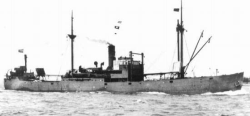
ss Amazone (Source: www.arendnet.nl)
Humiliano Paulino Bernabela (Bonaire, 22-6-1922) was a sailor at the KNSM-freighter ss Amazone and the youngest crew member. Humiliano probably is related to H.G. and L.E. Bernabela (see above at J. Boekhoudt). He died after a torpedo attack on 6 May 1942 among another nine Antilleans. All have a watery grave.
Attack
The Amazone (1922, 1300 tons) under captain J.P. Giltay was at the end of April 1942 with a cargo of mainly coffee and oil on its way from Curaçao to New York. There were 25 crew, among them one armed marine. The trip went from Haiti (29 April) to Key West. On 6 May 1942, 9.35 hrs, along the Florida coast off St. Lucie, the ship was hit by a torpedo on port side. The attack came from the German submarine U-333. The Amazone sank within two minutes.
Victims
11 People were picked up by the American submarine hunter PC-484 and brought to Miami. The 14 others, among them Humiliano Bernabela, drowned. Nine of them were Antilleans, three Surinamese (see the paragraph concerned). Two other victims came from Bonaire: A.C.P. Coffi (stoker) and A.I. Winklaar (stoker). Seven victims came from Curaçao: U. Boom (carpenter), F.L Capello (sailor), G.L. Doran (steward), M.M. Lourens (olieman), G.A. Manuela (steward) and D.H. Pourier (bosun). Also the Swiss captain J.P. Giltay and the Dutch marine Jan Kip (Dordrecht) died.
On 31 July 1944 the U-333 was sunk by two British ships off the Scilly Islands. None of the crew (45) survived.
Humiliano’s name is at the KNSM-monument as well as at the war monument in the capital of each of the six islands of the Antilles.
- J.P. Boekhoudt
José Pilatus Boekhoudt (Bonaire,12-10-1900) was captain of the sailing ship Irene. On 25 February 1944, in the Bay of Caracas, Curaçao, it sailed into the tanker Rosaura (CSM). This killed both him and two passengers. All have a watery grave. For more particulars see L.E. Bernabela.
José’s name is on the war monument in the capital of each of the six islands of the Antilles.
- P.A. Bomba
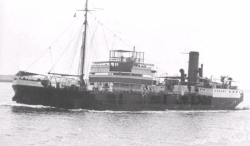
ss Casandra (Source: www.uboat.net - Picture: Wivonet)
Pedro Alusander Bomba (Bonaire, 9-9-1910) was a sailor on the CSM-tanker ss Casandra (1924, 2700 tons). The tanker mainly travelled between Curaçao and the Lake of Maracaibo in Venezuela. Pedro went missing on 18 March 1942 at sea off Maracaibo and has a watery grave.
Later, on 21 June 1944, east of Willemstad, the tanker would be heavily damaged by a torpedo by the German submarine U-539. The Casandra did not sink and managed to hit the attacker with its onboard cannon, who then ceased fighting (not mentioned by the website uboat.net).
Pedro’s name is not on the monuments, but is mentioned on the site of antillesatwar.com (‘Other Victims’).
Extra source: www.hetscheepvaartmuseum.nl
- U. Boom
Ulyses Boom (Trujillo in the Dominican Republic, 12-2-1907) was a ships carpenter on the KNSM-freighter s.s. Amazone. His mother was Dominican, his father was from Curaçao. He died after a torpedo attack on 6 May 1942, together with nine more Antilleans. All have a watery grave. For more details see H.P. Bernabela.
Ulyses' name is not on the KNSM-monument, but mentioned on the war monument in the capital of each of the six islands of the Antilles. By mistake the site of uboat.net 'Ulises' Boom is calling Venezuelan.
- J.S. Calmes
Jozef Supriano Calmes (Curaçao, 19-9-1898) was a dock worker at the CSM-tanker Ramona (1935). He died on 16 January 1943 in Curaçao. He was buried at an unknown place on the island.
Jozefs name is not on the monuments, but mentioned on the site of antillesatwar.com (‘Other Victims’).
- F.L. Capello
Francito Leoncito Capello (Curacao, 3-10-1900) was a sailor on the KNSM-freighter ss Amazone, as the youngest member of the crew. He died after the ship was torpedoed on 6 May 1942, just like nine more Antilleans. All have a watery grave. For more details see H.P. Bernabela.
Francito’s name is on the KNSM-monument as well as on the war monument in the capital of each of the six islands of the Antilles.
- C.B. Cicilia
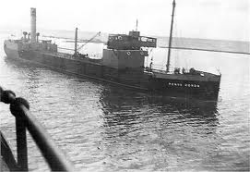
The British tanker ss Punta Gorda (Source: wrecksite.eu)
Claudio Benedicto Cicilia (Bonaire, 30-10-1928) was a apprentice steward on the British tanker Punta Gorda and the youngest of the seven Antillean victims. He died after a collision on 18 September 1944. All have a watery grave.
Collision
The Punta Gorda (1928, Lago Shipping-Esso, 2400 tons) was on its way with crude oil from the Lake of Maracaibo in Venezuela to Aruba. On 18 September 1944, five miles off Cape San Roman (Venezuela), a collusion occurred with the four times larger Belgian tanker Ampetco II, on its way from Willemstad. Because of the war the Ampetco II carried no lights. The Punta Gorda caught fire, exploded, broke in two and sank.
Victims
Cicilia was one of the twenty crew who died. Among them were two more men from Bonaire: D. Martijn (quartermaster) and H. de Palm (stoker), and also three men from Saba: J.A. Maxwell (sailor), A.D. Woods (quartermaster) and H.S. Woods (quartermaster); one of the victims was from Sint Maarten: G.R. Richardson (stoker)– see below. Five crew survived. Shortly after also the Ampetco II exploded. Here 33 members of the crew of 48 died.
Claudio’s name is on the war monument in the capital of each of the six islands of the Antilles.
- N.A. Clarinda
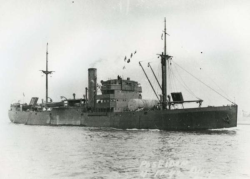
ss Poseidon (Source: www.uboat.net - Picture: Maritiem Museum)
Nicolaas Arteno Clarinda (Bonaire, 9-2-1917) was sailor on the KNSM-freighter ss Poseidon (1921, 1900 tons). Just like the other 30 crew, among them seven Antillean, he drowned after a German torpedo hit in the Atlantic off Barbados, on 28 May 1942. All have a watery grave. A lot is known about the ship and the attack.
Crew
At the end of May 1942 the Poseidon sailed under the Terschelling (Dutch island) captain Willem Klijn (1893) with a cargo of bauxite from Trinidad to New York. The Poseidon was not escorted. In the morning of 28 May they were about 250 km. north of Barbados. Bosun Arend Bakker (Terschelling, 1881) worked on the Poseidon since 1929. He was already pensioned, and was about to sail from New York to Paramaribo to wait there for the end of the war. Except for these two there were another fifteen Dutch 'civilians' on board, most of them high-ranking: helmsman, engineer, wireless operator or steward. There also were a gunner from the Royal Marine, the young Cornelis Langerhorst from Baarn. The ship also had 12 Dutch and 2 British ‘subjects’. The Dutch were from Bonaire (4), Curaçao (3), Suriname (5). In total 32 persons.
Attack
On 28 May 1942 around 5.00 hrs in the morning the ship was attacked by the German submarine U-155, but its torpedoes missed. At 5.30 hrs the Leutnant-Kapitän went for another attack. The gunner couldn't do a thing. The Poseidon was hit near the mast. Shortly after the kettle exploded and the ship started to sink at the stern.
Victims
All crew died. Among them was Nicolaas Arteno Clarinda. Other victims from Bonaire are D.G. Janga (sailor), J.M. Josefa (steward) and A.F. Thodé (sailor); from Curaçao J. Daanchi (sailor), E.J. Jansen (cook), Charles B. Rafael (assistant cook) and B.J. Rosalina (steward); see there.
For the Surinamese victims see the paragraph on Suriname.
On 5 May 1945 the U-155 surrendered in Denmark (near Frederica).
Nicolaas’ name is as well on the KNSM-monument as on the war monument in the capital of each of the six islands of the Antilles.
Extra sources:
- De torpedering van het SS Poseidon in mei 1942. Ingezonden door Ane Starrenburg, bewerkt door Anton Luijendijk (The torpedoing of the SS Poseidon in May 1942) (in: De Kroonvaarders KNSM, 29e jaargang, 2013 nr. 2 p. 32-37)
- Wal, Johan van der. 'We vieren het pas als iedereen terug is': Terschelling in de Tweede Wereldoorlog (2007) (We only celebrate when everyone has returned: Terschelling in the Second World War). Bijlage 1. http://dissertations.ub.rug.nl
- www.kroonvaarders.nl/oorlog/poseidon.html (crew list KNSM).
- A.C.P. Coffi
Antonio Clemente Papa Coffi (Bonaire, 23-11-1910) was stoker on the KNSM-freighter ss Amazone. He died after being torpedoed on 6 May 1942 and has a watery grave. He is possibly related to J.C. Coffi (see below). For more details see H.P. Bernabela.
Antonio’s name is on the KNSM-monument as well as on the war monument in the capital of each of the six islands of the Antilles.
- J.C. Coffi
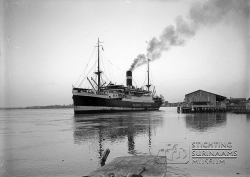
ss Crijnssen (Source: Flickr - Stichting Surinaams Museum - Picture: Augusta Curiel)
Juan Cacio Coffi (Bonaire, 20-10-1916) was a sailor on the KNSM-passenger ship ss Crijnssen which had 93 persons on board. Juan died after being torpedoed on 11 June 1942 and has a watery grave. He is possibly related to A.C.P. Coffi (see above). The Crijnssen (1919, 4300 tons), which was built as the Prins Maurits, was on its way from Demerara (British Guyana) via Curaçao to New Orleans. On 7 June 1942 it departed from Willemstad, under captain W. van der Giessen. There were two more ex-captains on board, a Norwegian and an American. This was for a reason.
Survivors ss Lise
Van der Giessen had taken in, among his own 71 persons on board, 10 survivors of the Norwegian tanker Lise. It transported ballast from Southampton to Curaçao, but was torpedoed on 12 May by the German submarine U-69, 250 km from its final destination. After that the submarine fired grenades, which killed twelve crew of the Lise. The remaining 21 Norwegians escaped in a lifeboat, a small sloop and a raft. The survivors in the lifeboat ended up in Columbia, the 10 others, also with help from the Dutch, ended up in different ways in Curaçao. Among them was the captain. He decided with his surviving crew to embark for repatriation via the US on the ss Crijnssen.
Survivors ss Sylvan Arrow
Also the captain and eleven crew of the American-Panamese oil tanker Sylvan Arrow were on board. On its way from Curaçao to Cape Town the oil tanker was set on fire by the U-155 on 20 May, 100 km off Grenada. One of the 44 persons on board drowned, the others survived and ended up in Trinidad with American help. From there some of them went back to save the tanker, but in vain. They were then transported back to Curaçao.
Attack and victim
On 11 June the Crijnssen, with ten survivors of the Lise and twelve of the Sylvan Arrow, was without an escort in the Strait of Yucatan, between Cuba en Guatemala. There the ship was hit at 02.10 hrs in the morning by two torpedoes. They were fired by the German submarine U-504. One of them was a direct hit. Sailor Juan Cacio Coffi lost his life.
Survivors
From the 92 persons on board 43 managed to get in lifeboats to the coast of Yucatan, Mexico. From there they were flown to Texas. Among them were the captain and six crew of the Sylvan Arrow, and a crew member of the Lise. The 49 others, with them fourteen remaining survivors of the Lise and the Sylvan Arrow, were picked up by the American merchant ship Lebore that was on its way with coal from Virginia to Chili. The Lebore was attacked at length on 17 June, 400 km off the coast of Nicaragua, by the U-172, after which the ship sank. All passengers but the assistent engineer of the Lebore could be saved after American help and were brought to Cristobal, Panama.
The U-504 sank on 30 July 1943 north-west of Cape Ortegal, Spain, after attack by four British warships. All 53 crew died.
Juans name is as well on the KNSM-monument as on the war monument in the capital of each of the six islands of the Antilles.
N.B.: www.ogs.nl specifies 10 June 1942 as date of death.
- T.M. Constancia
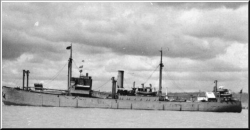
ss Medea (Source: www.wrecksite.eu)
Tito Martir Constancia (Curaçao, 4-1-1895) was a sailor on the KNSM-freighter ss Medea (1916, 1300 tons). He died after being torpedoed on 13 August 1942, just like to other fellow men from the island. All have a watery grave. A fourth man from Curaçao came on land badly wounded and was buried in Cuba.
The ship, 28 crew and with part of the cargo being 220 crates of dynamite, had on 24 July 1942 left New York and was on its way via Key West to Venezuela and Curaçao. It sailed in convoy, WAT-13.
Attack
In the early morning of 13 August (05.07 hrs) a German submarine attacked the convoy. Its position was off Guantanamo (Cuba). At first the U-658 fired two rounds of two torpedoes towards the convoy, and thereafter one from the stern. Three hours later, at 08.05 hrs, the submarine attacked again. The German captain believed having hit two ships, but only the Medea was hit, already at 5 o'clock. The torpedo entered at port side and caused a great fire. The machines broke down and the ship sank within 5 minutes.
Victims
The US-American escort ship picked up 24 crew and brought them to Guantanamo. There one of them died because of his injuries, the Curaçaoan B. C. Kraal (stoker). Also because of the explosion or because of the sinking of the Medea, Tito Martir died at sea as well as B.F. Leito (sailor) and J.S.R. Pietersz (stoker) from Curaçao (see below), and a stoker from Paramaribo (see Suriname).
The U-658 sank on 30 October 1942 east of Newfoundland, after attacks by a Canadian airplane. All 48 crew died.
Tito’s name is both on the KNSM-monument as on the war monument in the capitol of each of the six islands of the Antilles.
- J.S. Cornet
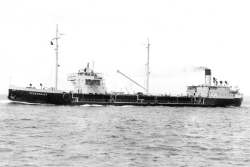
The British tanker ss Pedernales (Source: www.uboat.net - Picture: Fulvio Petronio)
James Stewart Cornet (Saba, 29-8-1904) was a sailor on the British oil tanker Pedernales (1938, 4300 tons, Lago Shipping, Esso – in 1958 Van Ommeren, renamed to Katendrecht). He died on 16 February 1942 after being torpedoed and has a watery grave. The same fate applies to four more Antilleans and three other crew.
Attack
The German operation Neuland deployed in 1942 six German and two Italian submarines to undermine the allied supplies of Venezuelan oil. The first attack was on the Lago refinery of Esso and the Arend refinery of Shell, at the Nicolaas harbour on Aruba. From 13 February on the long distance submarine U-156, armed with six torpedoes and two deck guns, reconnoitered the area around the refineries. On 16 February at 01.31 and 01.33 hrs (uboat.net asserts 7 hours later) it fired torpedoes at successively the Pedernales and its colleague tanker Oranjestad. Loaded with crude oil they were in the harbour of the Lago refinery. Ten minutes later the submarine fired with its deck guns grenades at the oil installations. It did little damage while, because of an explosion in one of the guns, two Germans were badly wounded, which one of them left dead.
Victims
There were more losses on the Pedernales. The tanker was hid mid-ship by one of the torpedoes and burned all day without sinking. Later, the ship could be repaired. But because of the explosion and the fire captain H. McCall was wounded and eight of the crew of 26 lost their lives. Among them was James Stewart Cornet from Saba. Four more Antilleans were among the dead: W.F. Rosario from Bonaire (sailor), M.B. Isjik from Curaçao (bosun), and J.O. Dembrooke (sailor) and W.O. Hooker (stoker) from St. Eustatius – see below. The also mid-ship hit Oranjestad lost sixteen of its 25 crew.
On 8 March 1943 the U-156 was sunk in the ocean between Barbados and Suriname, by an American Catalina. All 53 crew died.
James’ name is on the war monument in the capital of each of the six islands of the Antilles. There his name is written as Cornett.
Extra sources:
- http://en.wikipedia.org/wiki/Attack_on_Aruba
- http://www.lago-colony.com/AMERICANS_IN_ARUBA/COAST%20ARTILLERY%20COMMAND.htm (William C. Gaines)
- www.seawingsnv.com - Antillean Navigator Number 56, part 1 and 2, by Adolf (Dufi) Kock (autumn 2012)
- J.J. Curiel
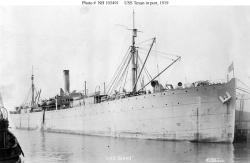
The US freighter ss Texan (Source: www.uboat.net - Picture: US Naval Historical Center)
Johannes Jozef Curiel (Curaçao, 6-3-1895) worked as a steward on the US American freighter ss Texan (1902, 7000 tons, American-Hawaiian St. Soc. NY). During the First World War the ship had been requisitioned for transport of troops. After that it returned to the merchant navy. Johannes lost his life after having been torpedoed on 11 March 1942. Just like the other eight crew who died, three officers and five more crew, Johannes Jozef Curiel has a watery grave.
Attack
The Texan was with a regular cargo and 47 persons on its way from New York to Rio de Janeiro, via Port of Spain (Trinidad). On the night of 12 March 1942 the ship was off Nuevitas (Cuba), 200 km. south of the Bahamas. The German submarine U-126 attacked the ship at 02.34 hrs and hit it with a torpedo. After that it fired its deck guns to disable the wireless office of the Texan. It failed to do so but within a quarter of an hour the ship started sinking.
Victims
Ten officers and 37 crew managed to escape with lifeboats. After that the ship keeled taking three officers and six crew with it, among them Johannes. The next morning the Cuban fishing boat Yoyo found the drowning persons. These seamen survived.
On 3 July 1943 the U-126 was sunk by a British war plane about 600 km. north-west of Extremadura (Spain). All 55 crew died.
Johannes’ name is missing on the monuments, but is in the list of antillesatwar.com (‘Other victims’). Johannes was in US-service. Posthumously him was awarded the US Mariner's Medal for seamen from the merchant navy.
Extra source: http://en.wikipedia.org/wiki/USS_Texan_(ID-1354)
- Th.J.B. Curlingford
Thomas James Benjamin Curlingford (St. Maarten, 23-9-1887) was pumpman on the Lago tanker San Carlos. He died on 11 May 1942 in Aruba, where his was buried in St. Nicolaas on an unknown cemetery.
Thomas’ name is mentioned on the site of antillesatwar.com (‘Other Victims’).
- J. Daanchi
Juan Daanchi (Curaçao) was sailor on the KNSM-freighter ss Poseidon. He drowned after having been torpedoed on 28 May 1942. He has a watery grave. For more particulars see N.A. Clarinda.
Juans name is both on the KNSM monument as on the war monument in the capital of each of the six islands of the Antilles.
- J.O. Dembrooke
John Otavo Dembrooke (Sint Eustatius, 20-1-1913) was a sailor on the British oil tanker Pedernales. He died after having been torpedoed on 16 February 1942 and has a watery grave. For more particulars see J.S. Cornet.
Johns' name is on the war monument in the capital of each of the six islands of the Antilles.
- P. Dijkhoff
Pedrito Dijkhoff (Aruba, 5-12-1902) was a sailor on the Nicaraguan schooner Gaviota, a sailing ship. He died around 2 June 1942 after having been fired upon and he has a watery grave. This also applies for two other Arubans, B. Tromp (cook) en A.F. Verhoeks (captain) and a number of Dominicans.
Destination and crew
The food supplies for the islands became precarious in May 1942. During that month even six KNSM-freighters were torpedoed by German submarines: the Amazone (6 May), the Fauna (18 May), the Hector (24 May), the Triton (28 May) and the Poseidon (also 28 May). The Dominican Republic was the main food supplier for Aruba and Curaçao but also her freighters were attacked. On 3 May the San Rafael and on 21 May the Presidente Trujillo were sunk. Sailing ships then seemed to be an alternative. On 2 June the Gaviota the harbour of Oranjestad for the Dominican Republic; the next day an second sailing ship would follow, the Sally. Besides the three Arubans mentioned, also two Dominicans were onboard; Jose Mercedes Del Rosario and Raul Ernesto Tejeda. But soon after its departure the Gaviota went missing.
Attack
A letter from 15 June by the Aruban lieutenant-governor to the harbour master of Curaçao states that the schooner was sunk by a submarine off Puerto Rico. Probably first a cargo of fruit, vegetables and other foods were transferred to another ship. The German U-502 might be a possible perpetrator. If this is correct, it will be the same one that attacked the ss Tia Juana on 16 February, the day with a record of Antillian losses (see J.W. Dunlock).
This submarine sank on 6 July 1942 in the Bay of Biscay by attacks from a British war plane. All 52 crew died.
Pedrito’s name is on the war monument in the capital of each of the six islands of the Antilles.
Extra source: Adolf (Dufi) Kock (autumn 2012) Aruba remembers World War II. In: www.seawingsnv.com/images/antilleannavigator56-deel1.pdf. Continued in deel2.pdf
- G.L. Doran
Gumercindo Leoncio Doran (Curaçao, 13-1-1923) was a steward on the KNSM-freighter ss Amazone, the second youngest member of the crew. He died after having been torpedoed on 6 May 1942. He has a watery grave. For more particulars see H.P. Bernabela.
Gumercindo’s name is both on the KNSM monument as on the war monument in the capital of each of the six islands of the Antilles.
- J.W. Dunlock
John William Dunlock (Saba, 3-2-1905) was quartermaster on the British oil tanker Tia Juana (1928, 2400 tons, Lago Shipping-Esso). He died after having been torpedoed on 16 February 1942 and has a watery grave. This also applies for sixteen more of the 26 crew. Seven of them were Antillean. It was a black day.
Attack
During operation Neuland, which started in the early hours of 16 February, five German and two Italian submarines were involved. Two aimed for the oil harbours and refineries of Aruba and Curaçao. In Aruba there were 24 victims, sixteen of them Antillean. The remaining submarines made out their targets on the transport route between the oil-rich Venezuelan Lake of Maracaibo and the two islands. Here, only the U-502 was successful. At 09.44 hrs the submarine fired torpedoes on the Tia Juana which had no escort. Loaded with crude oil it still was in the Gulf of Venezuela (40 km north-west of Punto Fijo) two-third on its way to the Sint Nicolaas harbour in Aruba. The ship caught fire and sank.
Victims
During this action 17 crew died. The captain and eight more crew managed to save themselves, or were saved, and reached Maracaibo. Besides Dunlock also J. Wilson (stoker) and W.A. Winfield (stoker) from Saba died. The other four Antillean victims were from Bonaire: O.D. Dominico (quartermaster), Th.F. Martijn (sailor), H.N. Martijn (quartermaster) and M. Serberie (sailor). For the Surinamese seafarer who died: see Suriname.
New attacks
At 10.28 hrs the same submarine fired at the Colombian side of the lake a full hit at the Venezuelan tanker Monagas. The ship sank and five of the 31 crew drowned. The U-502 then went back to the route of the Lago-tankers and sunk the San Nicolas, probably leaving six crew dead. In June the U-501 probably fired at the sailing ship Gaviota (see P. Dijkhoff).
The submarine itself sank on 6 July 1942 in the Bay of Biscay having been attacked by a British warplane. All 52 crew died.
Johns name is on the war monument in the capital of each of the six islands of the Antilles.
- L.N. Emerenciana
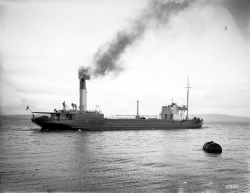
The British tanker ss Oranjestad (Source: wrecksite.eu)
Luis Nicolas Emerenciana (Bonaire, 10-9-1911) was one of the quartermasters of the British oil tanker Oranjestad (1927, 2400 tons, Lago Shipping, Esso). He died after having been torpedoed on 16 February 1942. He has a watery grave. The same applies to fourteen more of the 25 crew. Eleven of them were Antillean.
Attacks
In 1942 the German operation Neuland deployed six German and two Italian submarines to undermine the allied supplies of Venezuelan oil. The first attack was on 16 February 1942 at the brightly lit Sint Nicolaas harbour of Aruba, at that time the largest oil harbour in the world. At 01.31 and at 01.33 hrs the U-156 fired two torpedoes which hit the Pedernales and next the Oranjestad (remarkably uboat.net specifies 08.00 hrs). Loaded with crude oil they were moored at the Lago-refinery. The Oranjestad lifted its anchors and tried to get out, but was hit mid-ship, caught fire and sank within an hour in 70 meters deep water.
Victims
During this attack fifteen crew lost their lives. Eleven of them were Antillean. Among them was Luis Nicolas Emerenciana from Bonaire. Five more Bonairians died. They were Goeloe (sailor), R.C. Marchena (bosun), H.B. Martijn (quartermaster), A.J. de Palm (quartermaster) and A.G. Pieter (stoker). Also A.D. Granger (apprentice fireman), E.N. Linzey (steward), D.C. Lynch (sailor) and C.A. Wilson (stoker) from Saba and F. Pannelek (stoker) from Curaçao – see below. The captain and nine more crew of the Oranjestad could be saved by harbour personnel.
On 8 March 1943 the U-156, in the ocean between Barbados and Suriname, was sunk by an American Catalina. All 53 crew died.
Luis’ name is on the war monument in the capital of each of the six islands of the Antilles.
- J.A. Evertsz
Juan Alexander Evertsz (Bonaire, 8-2-1886) was sailor with an unknown shipping company. He died on 23 September 1944 and was buried in an unknown place.
Juan's name is missing on the monuments but listed on the site of antillesatwar.com (‘Other Victims’).
Fa King
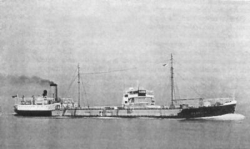
ss Rosalia (Source: cnoops.nl)
Fa King (China, ca. 1905) was second cook on the Dutch CSM-tanker Rosalia (1938, 3200 tons). He died after having been torpedoed on 27 July 1943, together with 22 other crew. Among them was another Chinese person, Yong Ah Chong, and two Antilleans, J.Hart and P. Tjietjie (see below).
Attack
Loaded with crude oil the Rosalia left on 26 July without escort the harbour of Maracaibo (Venezuela). In the late evening the tanker was 16 km from its destination, Willemstad. Around 22.00 hrs it was hit by two torpedoes from the German submarine U-615. The first hit was behind the bridge which caused a jet of flame and a fire. On the bridge were the captain, the third officer, a lookout and a helmsman. The second torpedo caused burning waves of oil which set fire to the rest of the ship. The Rosalia broke in two and finally sank at 00.20 hrs.
Victims
From the 36 seafarers two-third died of the explosions, the fire or drowned. The thirteen survivors were picked up by the Dutch submarine hunter HNMS H-8 and the lifeboat MBR-50. The following day the body of Fa King and other victims were brought ashore. Fa King was buried at the Kolebra Bèrdè cemetery in Willemstad, just like his fellow countryman.
On 6 August 1942 the U-615 was destroyed off Grenada by four Americans bombers. Four or five of the crew died, among them the commander. 43 Men were rescued and made prisoners of war.
Fa Kings name is on the website of Antillesatwar.com (‘Other Victims’).
Extra sources: www.cnoops.nl (T.J. Los), De Nederlandse Shellvloot tijdens de oorlogsjaren 1940-1945 (The Dutch Shell-fleet during the years of war 1940-1945). Geschreven op basis van: Geschiedenis van de Nederlandse Koopvaardij in de Tweede Wereldoorlog door K.W.L.Bezemer (1987, twee delen) and De Nederlandse Koopvaardij in de Tweede Wereldoorlog (The Dutch Merchant Navy during the Second World War) door L.L. von Münching (1978, twee delen).
- P.V. Goedgedrag
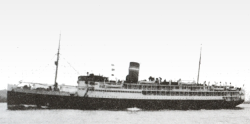
The US-passenger ship ss Coamo (Source: www.navymemorial.org)
Pedro Victor Goedgedrag (Bonaire, 31-1-1900) was a sailor on the US passenger ship Coamo (1925, 7000 tons), which was chartered for the transport of troops. He died after having been torpedoed on 2 December 1942, just like the other 185 persons on board. They all have a watery grave.
Attack
The Coamo left Gibraltar on 26 November 1942 and on 1 December sailed in convoy from England to New York. There were 133 crew on board, eleven of them being officers, 37 armed US-marines and, as passengers, 16 British military. At about 250 km west of Ireland captain Nels Helgesen received an order from the British admiralty to travel on independently. On 2 December at 20.18 hrs the German submarine U-604 fired from a distance of 750 meters a torpedo, which hit under the bridge. Within five minutes the ship started sinking.
Victims
Some men managed to get away on a raft, but probably drowned later on because of the storm that rose and continued for days. This was the biggest ship disaster for the US merchant navy during the Second World War.
On 11 August 1943 on the southern Atlantic Ocean, between Liberia and Brazil, the U-604 was heavily damaged by two US-American war planes. The 45 crew were saved by the U-185. It was sunk almost two weeks later (24 August) by fighters of the US aircraft carrier Core. 29 of the 51 crew died, among them fourteen of the U-604.
Pedro’s name is on the war monument in the capital of each of the six island of the Antilles. He was in US service and posthumously received a decoration for seafarers of the merchant navy, the US Mariner’s Medal. His name is not mentioned on the website of the US Navy (www.navymemorial.org).
- J.D. Goeloe
Juan Domingo Goeloe (Bonaire, 11-2-1888) was a sailor on the British oil tanker Oranjestad. He died on 16 February 1942 after having been torpedoed. Juan has a watery grave. Fifteen of the 25 crew died, among them eleven Antilleans. Juan Domingo was the oldest of them. For more particulars see L.N. Emerenciana.
Juan's name is on the war monument in the capital of each of the six islands of the Antilles.
- R. Gordon
Reginald Gordon (Saba 28-11-1919) was second cook on the large British tanker La Carriere (1938, 5700 tons). He died after having been torpedoed on 25 February 1942 and has a watery grave, like fourteen more crew. Two of them are Antilleans.
Attack
Without escort and loaded with ballast the tanker was on its way from New York to Trinidad. There were 41 crew. It sailed south of Haiti and Puerto Rico. Early in the morning on 25 February 1942, at 02.19 hrs, 110 km south of Guanica, Puerto Rico, the La Carriere was hit by two torpedo’s from the German submarine U-156. The tanker stopped but resumed its course after ten minutes. The first mate managed to evade two newly fired torpedo's, whilst the gunmen took aim at the submarine which had emerged. In spite of this the U-156 managed to hit the tanker with its last torpedo at 06.21 hrs. Shortly thereafter La Carriere sank.
Victims
Four gunmen and eleven more crew disappeared in the waves. The captain and four crew were picked up by a cutter from the American coast guard, 21 other members of the crew managed to land on the same day on the coast of Guanica. As well as Reginald Gordon also sailor Esau Emmanuel Laveist from the Antilles (St. Maarten) died (see below). They were among the youngest victims.
Nine days before the U-156 attacked two tankers and the Lago refinery in Aruba. The submarine was sunk on 8 March 1943, in the ocean between Barbados and Suriname, by an American Catalina. All 53 crew died.
Reginald's name is missing on the monuments but is in the list of war victims of Antillesatwar.com.
- A.D. Granger
Anthony Dudley Granger (Saba, 21-3-1905) was apprentice fireman on the British oil tanker Oranjestad. He died after having been torpedoed on 16 February 1942. He has a watery grave. For more particulars see L.N. Emerenciana.
Anthony’s name is on the war monument in the capital of each of the six islands of the Antilles.
- J.A. Hart
Juan Alejandro Hart (Bonaire, 12-6-1923) was a sailor on the Dutch CSM tanker Rosalia (1938, 3200 tons). He died after having been torpedoed on 27 July 1943, together with 22 more crew. Juan was one of the people whose body was brought ashore the following day. He was buried in the Roman-Catholic cemetery at the Roodeweg in Willemstad. For more particulars see Fa King.
Juans name is on the monument in the capital of each of the six islands of the Antilles.
- G. Hecker
Gerardo Hecker (Curaçao, 00-00-1875) was a cook on the Honduran sailing ship Sally (150 tons). He died after having been gunned on 5 June 1942 and has a watery grave. This also applies to captain J.A. Muller, who had the same age and also came from Curaçao (see below), and to R. Laguna from Venezuela and R.A. Guillot from Columbia.
Food supplies to the island had become precarious in May 1942. During that month six KNSM freighters were torpedoed by German submarines. The Dominican Republic was the major food supplier for Aruba and Curaçao, and on 3 and 21 May also her freighters were attacked. Sailing ships seemed to be an alternative. On 3 June the Sally left the Oranjestad harbour for the Dominican Republic; a day before the Gaviota had left.
Two days later, on 5 June in the evening at 20.10 hrs, the German submarine U-159 fired five rounds with its deck gun. The Sally sailed 120 km south of the Dominican Republic off Bani. Three rounds hit the Sally and around 21.15 hrs the sailing ship sank. The crew was not saved, unlike the crew of the sailing ship the Nueva Grecia on 16 June. On the same day and place the U-159 had sunk in the morning at 05.29 hrs the Brazilian scooner Paracury with its deck cannon. For more particulars see P. Dijkhoff on the sailing ship Gaviota.
The submarine itself was sunk on 28 July 1943 south of Haiti by an American navy airplane; all 53 crew died.
Gerardo’s name is on the war monument in the capital of each of the six islands of the Antilles.
Extra sources:
- Adolf (Dufi) Kock (autumn 2012) Aruba remembers World War II. In: www.seawingsnv.com/images/antilleannavigator56-deel1.pdf. Continued in deel2.pdf
- http://ww2db.com/battle_spec.php?battle_id=276
- L.P. Hernandez
Leon Papa Hernandez (Curaçao, 28-7-1894) was a sailor on the US freighter Mariana (Atl.Gulf West Ind. St. Lines). He died after having been torpedoed on 5 March 1942 and has a watery grave. The German submarine U-126 sank the ship north of the Turks and Caicos islands (north of Haiti).
Leons name is missing on the monuments but is in the list of war victims of Antillesatwar.com. Leon Hernandez was in US service and posthumously received the U.S. Mariners Medal.
- W.O. Hooker
William Oraldo Hooker (Sint Eustatius, 19-1-1911) was stoker on the British oil tanker Pedernales. He died after having been torpedoed on 16 February 1942 and has a watery grave. For more particulars see J.S. Cornet.
William's name is on the war monument in the capital of each of the six islands of the Antilles.
- M.B. Isijk
Martinus Bibiano Isijk (Curaçao, 2-12-1894) was bosun on the British oil tanker Pedernales. He died after having been torpedoed on 16 February 1942 and has a watery grave. For more particulars see J.S. Cornet.
Martinus’ name is on the war monument in the capital of each of the six islands of the Antilles.
- L.G. Italia
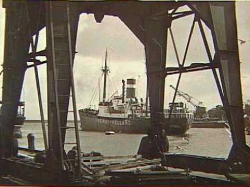
ss Tiberius (1939) (Source: www.kombuispraat.com)
Lorenzo Gregorio Italia (Curaçao, 17-11-1900) was steward on the KNSM freighter ss Tiberius. He went missing around 8 January 1943 in an unknown place and has a watery grave.
Lorenzo’s name is on the KNSM monument. He is missing on the war monuments but is in the list of war victims of Antillesatwar.com.
- D.G. Janga
Delfincio Gregorio Janga (Bonaire, 24-12-1898) was a sailor on the KNSM freighter ss Poseidon. He died after having been torpedoed on 28 May 1942 and has a watery grave. For more particulars see N.A. Clarinda. Delfincio was possibly related to N.Th. Janga (see J. Boekhoudt).
Delfincio’s name is as well on the KNSM monument as on the war monument in the capital of each of the six islands of the Antilles.
- E.J. Jansen
Enrique José Jansen (Curaçao, 19-3-1906) was a cook on the KNSM freighter ss Poseidon. He died after having been torpedoed on 28 May 1942 and has a watery grave. For more particulars see N.A. Clarinda.
Enrique’s name is as well on the KNSM monument as on the war monument in the capital of each of the six islands of the Antilles.
- B.J. de Jesus
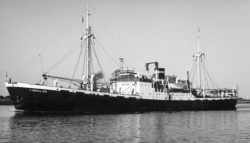
ss Pygmalion (Source: www.kombuispraat.nl)
Benito Josef de Jesus (Curaçao, 16-4-1900) was a sailor on the KNSM freighter ss Pygmalion (1938, 3600 tons). He went missing on 27 February 1944 in an unknown place in the Caribbean Sea and has a watery grave.
Benito’s name is missing on the war monuments of the Antilles and the KNSM, but is in the list of war victims of Antillesatwar.com (‘Other Victims’).
- J.M. Josefa
Johan (first name: Juan) Marco Josefa (Bonaire, 7-10-1896) was a steward on the KNSM freighter ss Poseidon. He died after having been torpedoed on 28 May 1942 and has a watery grave. For more particulars see N.A. Clarinda.
There is confusion about his presence on the ship, because an article about the ss Poseidon in Kroonvaarders (1981/2013) finishes with the remark that steward J.M. Josefa just before leaving Trinidad had been fired by the captain because of misconduct in Paramaribo (9-3-1942). The source of this remark is a letter by the Netherland Shipping Committee (3.5.1943). But Jos Rozenburg of Antillesatwar.com retrieved the original crew list of departure from Willemstad (4 May 1942), with Josefa as steward and a note about a person who stayed behind in Trinidad: gunner H.A. Klein. He presumes no replacement could have been found for Josefa at such a short notice (mail 21-8-2013).
Johan's name is missing on the war monuments of the Antilles and the KNSM, but is in the list of war victims of Antillesatwar.com.
- B.C. Kraal
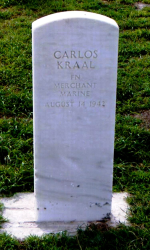
Gravestone of Benjamin Carlos Kraal (Foreign Nationality) Guantanamo (Source: www.ogs.nl)
Benjamin Carlos Kraal (Curaçao, 14-7-1895) was oiler on the KNSM freighter ss Medea (1916, 1300 tons). He died of his injuries the day after the ship had been torpedoed, 14 August 1942 and was buried at the U.S. Naval Cemetery in Guantanamo Bay (Cuba). Three fellow men from his island died immediately after the torpedoeing. They all have a watery grave. For more particulars see T.M. Constancia.
Bejamin's name is as well on the KNSM monument as on the war monument in the capital of each of the six islands of the Antilles.
- E.E. Laveist
Esau Emanuel Laveist (St. Maarten, 5-6-1919) was a sailor on the large British tanker La Carriere (1938, 5700 tons). He died after having been torpedoed on 25 February 1942 and has a watery grave. For more particulars see R. Gordon.
Esau’s name is on the war monument in the capital of each of the six islands of the Antilles.
- B.F. Leito
Benito Filemon Leito (Curaçao, 21-3-1914) was a sailor on the KNSM freighter ss Medea. He died on 13 August 1942 and has a watery grave. For more particulars see T.M. Constancia.
Benito’s name is as well on the KNSM monument as on the war monument in the capital of each of the six islands of the Antilles.
- E.N. Linzey
Eric Norbert Linzey (Saba, 7-4-1923) was steward on the British oil tanker Oranjestad. He died after having been torpedoed on 16 February 1942 and has a watery grave. Six more Antilleans lost their lives. Eric was the youngest of them. For more particulars see L.N. Emerenciana.
Eric's name is on the war monument in the capital of each of the six islands of the Antilles.
- M.M. Lourens
Marco Martinus Lourens (Curacao, 25-4-1905) was oiler on the KNSM freighter ss Amazone. He died after having been torpedoed on 6 May 1942 and has a watery grave. For more particulars see H.P. Bernabela.
Marco’s name is on the KNSM monument. He is missing on the war monuments, but is in the list of war victims of Antillesatwar.com.
- D.K. Lynch
Darcey Kenneth Lynch (Saba, 25-12-1909) was a sailor on the British oil tanker Oranjestad. He died after having been torpedoed on 16 February 1942 and has a watery grave. For more particulars see L.N. Emerenciana.
Darcey’s name is on the war monument in the capital of each of the six islands of the Antilles.
- E.I. Maduro
Eduardo Ignacio Maduro (Curaçao, 1-2-1898) was stoker on the freighter ss Beursplein (1920, 4400 tons, Stoomvaart Maatschappij Millingen). He died after shelling on 26-2-1941.
Attack
On 26 February 1941 the freighter Beursplein sailed together with the ss Amstelland (8100 tons, Kon. Holl. Lloyd) in the Atlantic. Both had left from Gourock (Glasgow); the Beursplein with New York as its destination, the Amstelland with Buenos Aires. About 200 km west of Ireland they were attacked by a FW 200 ‘Kondor’-bomber. Kondors preyed the ocean for allied ships and exchanged information with submarines, in this case the U-47. Besides the two Dutch merchant ships, they also found other ships that day. The Kondor bombarded the Greek ss Kyriakoula (crew saved) and the Norwegian ss Solferino (3 crew died), which were also sailing together. Next the bomber attacked members of the OB 209 convoy: the British ss Llanwern (27 crew died), Mahanada (3 crew died), Swinburne (crew saved) and the Melmore Head (crew saved). The U-47 attacked with torpedoes the same convoy: the Norwegian Borgland (crew saved), the Belgian Kasongo (6 crew died) and the Swedish Rydboholm (crew saved). The ss Diala was only damaged.
Victims
The Beursplein sank. Second helmsman L.C.L. Theunisse, though wounded, managed to to save just like oiler S. Haanstra crew members. But 22 crew drowned. Among them was Eduardo Ignacio Maduro. The ss Amstelland was badly damaged, the captain lost his life, but the ship did not sink and could be towed to the main land two days later.
A week later, on 7 or 8 March, the U-47 was hit by the British destroyer Wolverine. Others believe one of its own torpedo's was fatal to the submarine. All crew died.
Eduardo’s name is missing on the war monuments, but is in the list with war victims of Antillesatwar.com.
Extra sources:
- http://en.wikipedia.org/wiki/List_of_shipwrecks_in_February_1941
- www.aukevisser.nl/etm/id110.htm
- www.onderscheidingen.nl/decorandi/wo2/dec_h01.html
- G.A. Manuela
Gabriel Alfredo Manuela (Curacao, 19-2-1902) was a steward on the KNSM freighter ss Amazone. He died after having been torpedoed on 6 May 1942 and has a watery grave. For more particulars see H.P. Bernabela.
Gabriel's name is both on the KNSM monument as on the war monument in the capital of each of the six islands of the Antilles.
- R.C. Marchena
Rafael Crispiniano Marchena (Bonaire, 25-10-1897) was bosun on the British oil tanker Oranjestad. He died after having been torpedoed on 16 February 1942 and has a watery grave. For more particulars see L.N. Emerenciana.
Rafael's name is on the war monument in the capital of each of the six islands of the Antilles.
- P.M. Martes
Pedro Martin(us) Martes (Bonaire, 12 or 17 april 1914) was quartermaster on a merchant ship. He died on 6 July 1943 near La Salina (Venezuela, near Giuria, across Trinidad). His place of burial is unknown.
Pedro’s name is missing on the war monuments, but is in the list of war victims of Antillesatwar.com (‘Other Victims’).
- D. Martijn
Dominico Martijn (Bonaire, 19-10-1917) was quartermaster on the British oil tanker Punta Gorda. He died after a collision on 18 September 1944 and has a watery grave. Dominico, Hosé and Olivero Martijn are brothers. For more particulars see C.B. Cicilia.
Dominico’s name is on the war monument in the capital of each of the six islands of the Antilles.
- H.B. Martijn
Hosé Bernardo Martijn (Bonaire, 2-7-1908) was one of the quartermasters on the British oil tanker Oranjestad. He died after having been torpedoed on 16 February 1942 and has a watery grave. Dominico, Hosé and Olivero Martijn are brothers. For more particulars see L.N. Emerenciana.
Hosé’s name is on the war monument in the capital of each of the six islands of the Antilles.
- O.D. Martijn
Olivero Dominico Martijn (Bonaire, 4-8-1910) was one of the quartermasters of the British oil tanker Tia Juana. He died after having been torpedoed on 16 February 1942 and has a watery grave. Dominico, Hosé and Olivero Martijn are brothers. For more particulars see J. W. Dunlock.
Olivero’s name is on the war monument in the capital of each of the six islands of the Antilles.
- P.W.H. Martijn
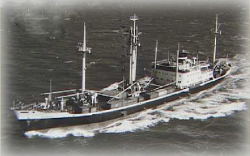
ss Willemstad in 1960 (Socrates from 1938-1950) (Source: www.ndsm-museum.nl)
Petrus Willem Hendrik Martijn (Curaçao, 27-4-1887) was steward on the KNSM passenger and freighter ss Socrates (1938, 5000 tons; in 1950 converted into the ss Willemstad). He died on 30 Augustus 1943 in Buenos Aires (Argentina) and was buried there in the British cemetery.
Petrus’ name is on the KNSM monument. He is missing on the war monuments, but is in the list of war victims of Antillesatwar.com (‘Other Victims’).
- Th. F. Martijn
Thomas Flavianus Martijn (Bonaire 21-12-1902) was sailor on the British oil tanker Tia Juana. He died after having been torpedoed on 16 February 1942 and has a watery grave. Thomas is possibly related to the three other Martijns from Bonaire in this chapter.
Thomas’ name is on the war monument in the capital of each of the six islands of the Antilles.
- F.M. Martis
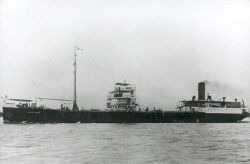
ss Mariana (CSM) (Source: www.helderline.nl)
Faustino Miguel Martis (Bonaire, 15-2-1903) was quartermaster on the CSM tanker ss Mariana (1925, 3300 tons) – not to be mistaken for the US tanker with the same name (see L.P. Hernandez). He went missing on 15 August 1944 in the Caribbean and has a watery grave. Faustino is possibly related to H.N. Martis.
Faustino’s name is missing on the war monuments, but is in the list with war victims of Antillesatwar.com (‘Other Victims’).
- H.N. Martis
Hendrik Natividad Martis (Bonaire, 8-9-1911) was one of the quartermasters of the British oil tanker Tia Juana. He died after having been torpedoed on 16 February 1942 and has a watery grave. For more particulars see J. W. Dunlock. Hendrik is possibly related to F.M. Martis.
Hendrik's name is on the war monument in the capital of each of the six islands of the Antilles.
- J.A. Maxwell
James Andrew Maxwell (Saba, 6-1-1913) was a sailor on the British oil tanker Punta Gorda. He died after a collision on 18 September 1944 and has a watery grave. For more particulars see C.B. Cicilia.
James’ name is on the war monument in the capital of each of the six islands of the Antilles.
- F.G. Montanus
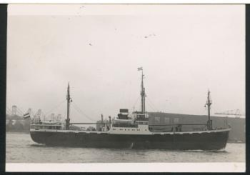
ss Notos (Source: www.maritiemdigitaal.nl)
Federico Gregorio Montanus (Curaçao, 9-9-1882) was a sailor on the KNSM freighter ss Notos (1939, 1600 tons). He died on 9 March 1942 in Curaçao, where he was buried in an unknown location.
Federico’s name is missing on the war monuments of the Antilles and the KNSM, but is in the list with war victims of Antillesatwar.com (‘Other victims’).
- J.A. Muller
Julius August Muller (Curaçao, 16-2-1875) was captain on the Hondurese sailing ship Sally. He died after having been gunned on 5 June 1942 and has a watery grave. This also applies to cook G. Hecker, same age and also from Curaçao, and two more crew. For more particulars see G. Hecker.
Julius’ name is on the war monument in the capital of each of the six islands of the Antilles. There his family name is Statius-Muller, probably because of confusion with the victim mentioned before him, G.A.L. Muller-Statius, where this addition is left out.
- A.J. de Palm
Andres José de Palm (Bonaire, 22-3-1899) was one of the quartermasters of the British oil tanker Oranjestad. He died after having been torpedoed on 16 February and has a watery grave. For more particulars see L.N. Emerenciana.
Andres’ name is on the war monument in the capital of each of the six islands of the Antilles.
- H.(N.) de Palm
Hubert de Palm (Bonaire, 2-11-1919) was stoker on the British oil tanker Punta Gorda. He died after a collision on 18 September 1944 and has a watery grave. For more particulars see C.B. Cicilia.
Hubert's name is on the war monument in the capital of each of the six islands of the Antilles.
- F. Pannelek
Federico Pannelek (Curaçao, 21-8-1901) was stoker on the British oil tanker ss Oranjestad. He died after having been torpedoed on 16 February 1942 and has a watery grave. For more particulars see L.N. Emerenciana.
Federico’s name is on the war monument in the capital of each of the six islands of the Antilles. His family name is written there as Panneflek. This name was on his birth certificate and was later changed to Pannelek (e-mail Jos Rozenburg 19-8-13).
- A.G. Pieter
Alberto Gregorio Pieter (Bonaire, 9-5-1912) was stoker on the British oil tanker ss Oranjestad. He died after having been torpedoed 16 February 1942 and has a watery grave. For more particulars see L.N. Emerenciana.
Alberto’s name is on the war monument in the capital of each of the six islands of the Antilles.
- J.S.R. Pietersz
Julio Serapio Remigio Pietersz (Curacao, 14-11-1902) was stoker on the KNSM freighter ss Medea. He died after having been torpedoed on 13 Augustus 1942 and has a watery grave. For more particulars see T.M. Constancia.
Julio’s name is both on the KNSM monument as on the war monument in the capital of each of the six islands of the Antilles.
- D.H. Pourier
David Hilario Pourier (Curacao, 14-1-1891) was bosun on the KNSM freighter ss Amazone. He died after having been torpedoed on 6 May 1942 and has a watery grave. For more particulars see H.P. Bernabela.
David's name is both on the KNSM monument as on the war monument in the capital of each of the six islands of the Antilles. There his name is written as D.H.P. Pourier.
- J.C. van Putten
James Clarence van Putten (St. Eustatius 29-12-1913) was stoker on the British oil tanker San Nicolas (1926, 2400 tons, Lago Shipping-Esso). He lost his life on 16 February 1942 and has a watery grave. This also applies to six more of the 26 crew. Three of them were Antillean.
Attacks
During the Neuland campaign, which started early in the morning of 16 February, five German and two Italian submarines were involved. The campaign targeted the transport route between the oil-rich Venezuelan Sea of Maracaibo and the two islands. First the U-504 successfully attacked the British Lago tanker Tia Juana (09.44 hrs) and next the Venezuelan tanker Manogas (10.28 hrs). It sailed north of Punta Espada on the Colombian side. The submarine returned to the route of the Lago tankers and caught sight of the San Nicolas which had no escort. At 11.34 hrs the U-502 fired its first torpedo. With a cargo of crude oil the San Nicolas was still in the Bay of Venezuela (40 km north-west of Punto Fijo) and on two-third of its trip to the Sint Nicolaas harbour in Aruba. The torpedo missed. The second one, at 11.50 hrs, was a hit. The tanker caught fire and sank. It was in the same area where the Tia Juana had been sunk shortly before.
Victims
Eight crew didn't survive the disaster. Four British and four Antilleans. The other nineteen crew managed to save themselves or were saved, and ended up in Maracaibo. Besides van Putten also the following Antillean seafarers died: C.B. Rafael (assistant cook) also from Curaçao, and from Bonaire L.B. Scherptong (sailor) and J.G. Thielman (stoker).
The U-504 sank on 30 July 1943 north-west of Cape Ortegal, Spain, after attacks by four British war ships. All 53 crew died.
James’ name is on the war monument in the capital of each of the six islands of the Antilles.
- J.M.S. Raas
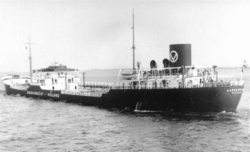
ss Barendrecht (Source: www.zeevlootvos.bebelaar.nl)
José Maria Supriano Raas (Curaçao, 26-9-1912) was oiler on the oil tanker ss Barendrecht 4 (Ph. van Ommeren,1935). From July 1940 on the ship was chartered for the British government and stationed with Anglo-Saxon Petroleum Co.
Attack
During a German air raid on the British Tilbury the ship was heavily damaged and both the captain and the second helmsman died. After repairs the Barendrecht continued as supply tanker.
José died on 18 March 1943 in Sidney (Australia) and was buried there in the Necropolis Rookwood Cemetery.
José’s name is missing on the war monuments, but is in the list with war victims of Antillesatwar.com (‘Other victims’).
Extra source: www.zeevlootvos.bebelaar.nl
- C.B. Rafael (Martina)
Charles Benigno Rafael (Curaçao, 13-2-1906) was an assistant cook on the KNSM freighter ss Poseidon. He died after having been torpedoed on 28 May 1942 and has a watery grave. For more particulars see N.A. Clarinda.
There is some confusion about the name Rafael, because his mother later changed this surname into Martina and therefore Charles is also known with this name. There is also confusion about the ship. The Oorlogsgravenstichting (War Graves Foundation, Aug. 2013) states he was on the English tanker San Nicolas. Researcher Jos Rozenburg though managed to retrieve the original birth certificate and crewlist and concludes it is the same man, who was a crew member of the ss Poseidon (e-mail 19-8-2013).
Charles’ name is both on the KNSM monument as on the war monument in the capital of each of the six islands of the Antilles. On the KNSM monument he has the name his mother later adopted: C.B. Martina. On the war monuments in the Antilles he is named Ch. B. Rafael.
- J. Rasmijn
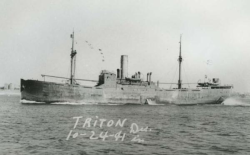
ss Triton (Source: www.maritiemdigitaal.nl)
Jacob (Jacobo) Rasmijn (Aruba, 23-10-1922) was assistant cook on the KNSM freighter ss Triton. According to the Oorlogsgravenstichting (War Graves Foundation) he died on 7 March 1942 on the Suriname River. The circumstances around his death are unknown. Jacob was buried in the La Rencontre cemetery in Smalkalden, Para, Suriname (near the bauxite village of Paranam, 10 km south of Domburg).
Almost three months later the ss Triton was torpedoed on 28 May 1942, in the Atlantic, which caused six crew to lose their lives. For more particulars see Suriname, seafarers, Max Elmont.
Jacob's name is on the KNSM monument. It is missing on the war monuments, but is in the list with war victims of Antillesatwar.com (‘Other victims’). Here his name is Jacobo Rasmijn, with date of death 9 March 1942.
- G.R. Richardson
George Ruben Richardson (St. Maarten, 16-3-1910) was stoker on the British oil tanker Punta Gorda. He died after a collision on 18 September 1944 and has a watery grave. For more particulars see C.B. Cicilia.
George’s name is on the war monument in the capital of each of the six islands of the Antilles.
- B.J. Rosalina
Bienvenido José Rosalina (Curacao, 22-3-1916) was steward on the KNSM freighter ss Poseidon. He died after having been torpedoed on 28 May 1942 and has a watery grave. For more particulars see N.A. Clarinda.
Bienvenido’s name is both on the KNSM monument as on the war monument in the capital of each of the six islands of the Antilles. There his initials are J.B.
- W.F. Rosaria
Willem Francisco Rosaria (Bonaire, 10-3-1895) was sailor on the British oil tanker Pedernales. He died after having been torpedoed on 16 February 1942 and has a watery grave. For more particulars see J.S. Cornet.
Willem's name is on the war monument in the capital of each of the six islands of the Antilles.
- F.A. Scharbaai
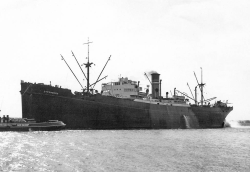
ss Zijpenberg (Source: www.kustvaartforum.nl)
Florencio Antonio Scharbaai (Curaçao, 26-10-1917) was steward on a freighter of the Stoomboot Maatschappij Hillegersberg, the ss Zijpenberg (1935 as Charterhurst, then also rebaptized, 5054 tons). During a trip in convoy from New York to England, the Zijpenberg collided in dense fog with the Canadian corvette HMCS Windflower. The corvette sank. Florencio Scharbaai died in Philadelphia (USA) on 4 August 1942, and was buried there at the Holy Cross Cemetery, Yeadon.
Florencio’s name is missing on the war monuments, but is in the list with war victims of Antillesatwar.com (‘Other victims’).
Extra bron: www.kustvaartforum.com
- L.B. Scherptong
Luis Bertrando Scherptong (Bonaire, 6-9-1919) was a sailor on the British oil tanker San Nicolas. He lost his life after having been torpedoed on 16 February 1942 and has a watery grave. Luis was the youngest of the four Antilleans victims. For more particulars see zie J.C. van Putten.
Luis’ name is on the war monument in the capital of each of the six islands of the Antilles.
- R.A. Schotborgh (Merced)
Rafael Arcangel Schotborgh (Curacao, 24-10-1894) was an assistant cook on the KNSM freighter ss Amazone. He died on 14 July 1940 in the Caribbean because of a heart attack and has a watery grave. For more particulars about the later misfortune of the ship see H.P. Bernabela.
Rafael Schotborgh is on the KNSM monument with his name of birth Merced (e-mail Jos Rozenburg, 19-8-2013). He is missing on the war monuments of the Antilles, but is named as R.A. Schotborgh in the list with war victims of Antillesatwar.com (‘Other victims’).
- M. Serberie
Marco Serberie (Bonaire, 14-7-1940) was a sailor on the British oil tanker Tia Juana. He died after having been torpedoed on 16 February 1942 and has a watery grave. For more particulars see J. W. Dunlock.
Marco’s name is on the war monument in the capital of each of the six islands of the Antilles.
N.B.: www.ogs.nl has as date of death 14-7-1940 (July 2013)
- C.A. Simmons
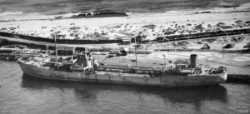
Tanker ss Ferncastle (A/S Glitre, Oslo) (Source: www.warsailors.com)
Carl Aloysius Simmons (Saba, 1-2-1910) was steward on the Norwegian tanker Ferncastle (1936, 9900 tons, A/S Glitre, Oslo). He died on 12 July 1943, about 3000 km north-west of Perth (Australia), after having been gunned by a torpedo boat during a survival trip. Carl Simmons has a watery grave. This also applies to 23 more members of crew.
Steward
Carl enrolled on 14 May 1941 in Aruba. He probably was a steward. In a Norwegian book about the last voyage of the Ferncastle (1953) his rank condescendingly is described as ‘saloon boy’. The 'boy' worked for the captain, officers and sometimes for the passengers. There were also an elderly Norwegian ‘steward’ onboard (probably the purser) and a Chinese ‘mess boy’, for the crew. At that time the Ferncastle sailed between Glasgow (Clyde) and Latin America. In 1942 and 1943 the tanker mostly transported freight in the Indian Ocean, between the Persian Gulf, South-Africa and Australia.
Attack
On 11 June 1943 the Ferncastle left Esperance Bay (Western-Australia) for Abadan (Iran) with 37 crew, no passengers. Six days later the ship was spotted by the German armed merchant cruiser Michel. An ‘armed merchant cruiser’, is a merchant ship that is kitted out as a war warship and can easily attack enemy merchant ships. After sunset the Michel launched a motor torpedo boat (‘Esau’) which fired at 19.25 hrs two torpedo’s that hit port side. The ship started to slant to that side but kept afloat. Captain Toralf Andersen believed they were hit by a submarine and had the deck gun prepared and sailed away. Shortly thereafter a huge ship appeared, the armed merchant cruiser Michel. The captain then ordered to stop the engines and the entire crew to leave for the lifeboats. Meanwhile the Michel started a heavy shelling, during which the pump room was hit and a fire broke out. Several crew died and at least 13 others, who were in a lifeboat, were taken prisoner. Two other lifeboats, one with a sail and one with an engine, which took eventually 19 seamen, managed to get out of reach of both the enemy ships. On 17 June at 23.00 hrs the Ferncastle sank and the armed merchant cruiser disappeared. It had made its 17th victim.
Survival trip
The captain who was in the engine boat meant that according to the wind and the current, it would be easiest to get to the Chagos islands (Diego Garcia), 2500 km away. Later on when the wind was going down, that Reunion, Mauritius or Madagascar should be their target. Meanwhile all drowning persons, among them some wounded, went over to the sailing boat, because it was faster and had ores. The sloop took in water, there was a lack of food and water, the wounded had infections, and the first one died on 9 July. It was the mechanic who had a shell splinter in his lungs. He was given a watery grave. The day after a sailor with wounds to his hands died and after that another sailor who possibly drank sea water. On that day, 12 July the boat capsized during a heavy storm, a man fell overboard, but was pulled in again. The compass went lost. On 13 July Carl Simmons died. According to the Norwegian record he denied the food offered. Two more died before they eventually, on 17 July, reached land: Madagascar. The support was very good and the thirteen survivors could recuperate. In October they landed with a transport of troops in Durban (South Africa). Except for the English gunner they were all Norwegians.
Armed merchant cruiser Michel
On 17 October 1943 the cruiser Michel went to the bottom by doing of the US-American submarine Tarpon (SS-175). 15 Officers and 248 crew drowned, 110 others managed to get ashore.
Victims
19 prisoners of war from the two Norwegian tankers which were attacked by the Michel, the Ferncastle (11 June) and the Høegh Silverdawn (15 June), drowned during the torpedo attack by the Tarpon. At least 13 victims were seafarers from the Ferncastle. During the German attack on 11 June already a number of men had died, and in the lifeboat another 6 died, among them the only non-Norwegian, Carl Simmons. In total 18 victims were Norwegians, the others were Australians (2), Chinese (2), British (1) and Antillean (1).
Carl's name is missing on the war monuments, but is on the list of war victims of Antillesatwar.com (‘Other victims’).
Extra source: www. warsailors.com/singleships/ferncastle.html
- H.G. Thielman (Bernabela)
Herman (first name: José) Geronimo Thielman (Bonaire, 14-4-1903) was stoker on the British oil tanker San Nicolas. He lost his life after having been torpedoed on 16 February 1942 and has a watery grave. For more particulars see J.C. van Putten.
Research by Jos Rozenburg of Antillesatwar.com revealed that Herman Geronimo Thielman is the same person as Herman (José) Geronimo Bernabela (see there). Bernabela is his mother's name, who later married to mister Thielman. He is therefore mentioned twice on the plaque, by the names Bernabela and Thielman. He is possibly related to H.P. and L.E. Bernabela (see there). The change between the first names Herman and José is a change between christian and first names. Here we use his christian name.
Herman's name is on the war monument in the capital of each of the six island of the Antilles. There his initials are J.G.
- A.F. Thodé
Antonio Francisco Thodé (Bonaire, 13-6-1909) was a sailor on the KNSM freighter ss Poseidon. He is possibly related to Stephanus Thodé (see there). Antonio died after having been torpedoed on 28 May 1942 and has a watery grave. For more particulars see N.A. Clarinda.
Antonio’s name is both on the KNSM monument as on the war monument in the capital of each of the six islands of the Antilles.
- S. Thodé
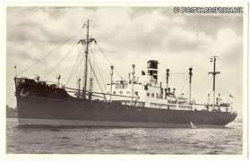
ss Clio (Source: www.kroonvaarders.nl)
Stephanus Thodé (Bonaire, 2-9-1899) was a sailor on the small KNSM freighter ss Clio. (1936, 374 tons). The Clio was delivered in March 1936 to the West Indische Stoomvaart Maatschappij N.V., Curaçao (WISM), but stayed under management with the KNSM. At the end of 1953 the ship was sold to Trinidad. No war incidents are known about the ss Clio. Stephanus died on July 1944 in Colon (Panama). He is possibly related to Antonio Thodé (see there).
Stephanus’ name is on the war monument in the capital of each of the six islands of the Antilles. He is missing on the KNSM monument.
Extra source: www.kroonvaarders.nl
- P.B. Tjietjie
Pieter Baldemar Tjietjie (Bonaire, 18-8-1917) was stoker on the Dutch oil tanker Rosalia (1938, 3200 tons, Shell). He died after having been torpedoed on 27 July 1943 and has a watery grave, together with 22 other crew. For more particulars see Fa King.
Pieter's name is on the war monument in the capital of each of the six islands of the Antilles. There his name is written as Tjie Tjie.
- B. Tromp
Bartolo Tromp (Aruba, 4-12-1898) was cook on the Nicaraguan scooner Gaviota, a sailing ship. He died after having been shelled around 2 June 1942 and has a watery grave. For more particulars see P. Dijkhoff.
Bartolo’s name is on the war monument in the capital of each of the six islands of the Antilles.
- A.F. Verhoeks
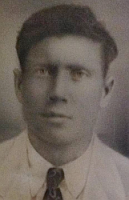
A.F. Verhoeks (Source: www.antillesatwar.com)
Arturo Fernando Verhoeks was captain on the Nicaraguan scooner Gaviota, a sailing ship. He died after having been shelled around 2 June 1942 and has a watery grave. This also applies to two other Arubans, a sailor and the cook, and two Dominicans aboard. For more particulars see P. Dijkhoff.
Arturo’s name is on the war monument in the capital of each of the six islands of the Antilles.
- C.A. Wilson
Clifford Achilles Wilson (Saba, 5-8-1910) was stoker on the British oil tanker ss Oranjestad. He is possibly related to the Sabans Theophilus and John Wilson (see there). Clifford died after having been torpedoed on 16 February 1942 and has a watery grave. For more particulars see L.N. Emerenciana.
Clifford's name is on the war monument in the capital of each of the six islands of the Antilles.
- J. Wilson
John Wilson (Saba, 14-7-1913) was stoker on the British oil tanker Tia Juana. He is possibly related to the Sabans Clifford and Theophilus Wilson (see there). John died after having been torpedoed on 16 February 1942 and has a watery grave. For more particulars see J. W. Dunlock.
John's name is on the war monument in the capital of each of the six islands of the Antilles.
- Th. Wilson
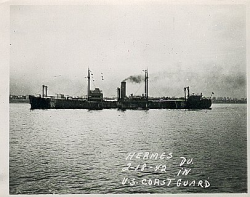
ss Hermes (Bron: www.netwerkoorlogsbronnen.nl)
Theophilus Wilson (Saba, 3-11-1910) was a sailor on the tanker Hermes, Petroleum Maatschappij La Corona (1914, 3800 tons). Theophilus died in Haifa (Israel), on 31 December 1941, and was buried there in the Sharon Civil Cemetery. In 1942 the ship operated as a US coastguard. Theophilus is probably related to John and Clifford Wilson (see there).
Theophilus’ name is missing on the war monument, but is in the list with war victims of Antillesatwar.com (‘Other victims’).
Extra sources:
- www.cnooks.nl/shell.htm
- www.netwerkoorlogsbronnen.nl
- W.A. Winfield
Walter Allen Winfield (Saba 10-8-1942) was stoker on the British oil tanker Tia Juana. He died after having been torpedoed on 16 February 1942 and has a watery grave. For more particulars see J. W. Dunlock.
Walter's name is on the war monument in the capital of each of the six island of the Antilles.
- A.I. Winklaar
Antonio Ignacio Winklaar (Bonaire,1-2-1915) was a sailor on the KNSM freighter ss Amazone. He died after having been torpedoed on 6 May 1942 and has a watery grave. For more particulars see H.P. Bernabela.
Antonio’s name is both on the KNSM monument as on the war monument in the capital of each of the six islands of the Antilles.
- E.O. Winklaar
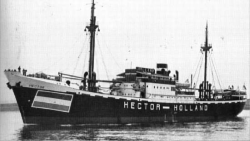
ms Hector (Source: www.uboat.net)
Elias Obispo Winklaar (Curaçao, 15-1-1912) was cook on the KNSM motor ship Hector (1939, 1800 tons). He died after having been torpedoed on 24 May 1942. He has a watery grave, just like another member of the crew.
On 24 May 1942 the ms Hector was attacked below Cuba by the German submarine U-103. From the 31 crew the cook and the radio operator died.
Elias’ name is missing on the war monuments of the Antilles and the KNSM, but is in the list of war victims of Antillesatwar.com.
- A.D. Woods
Antonio Duran Woods (Saba, 13-12-1916) was one of the quartermasters of the British oil tanker Punta Gorda. He died after a collision on 18 September 1944 and has a watery grave. He is possibly related to H.S. Woods (see there). For more particulars see C.B. Cicilia.
Antonio’s name is on the war monument in the capital of each of the six islands of the Antilles.
- H.S. Woods
Henry Swinton Woods (Saba, 17-1-1912) was one of the quartermasters of the British oil tanker Punta Gorda. He died after a collision on 18 September 1944 and has a watery grave. He is possibly related to A.D. Woods (see there). For more particulars see C.B. Cicilia.
Henry’s name is on the war monument in the capital of each of the six islands of the Antilles.
Yong Ah Chong
Yong Ah Chong (China ca. 1890) was sailor on the Dutch CSM tanker Rosalia (1938, 3200 tons). He died after having been torpedoed on 27 July 1943. His body was brought on land the following day and buried in the Kolebra Bèrdè cemetery in Willemstad. For more particulars see Fa King.
Yong Ah Chong's name is mentioned on the website of Antillesatwar.com (‘Other Victims’).
- J.P. Boekhoudt
Oscar Beaujon (Curaçao 1923) was a student in Utrecht during the war. In December 1942 the occupiers demanded from the universities a list of students in order to have them sent to Germany for 'forced labour'. The universities refused. The occupiers then gave the students a so-called 'loyalty declaration' to sign. Those who did not sign had to report for 'Arbeitseinsatz' (forced labour). Eighty-five percent of the students refused to sign. Beaujon went into hiding and survived.
Isaac ('Sjakie') de Castro Yohai (Curaçao) studied law in Holland. He was a descendant of a well-known Jewish family. In 1942 he fled via France to Spain, together with Ernest Cohen Henriquez*. After the war he returned to the Antilles where he became attorney general. (www.sefarad.org/publication/lm/042/2.html)
Ernest ('Onchi') Cohen Henriquez (Curaçao 1917-2004). During the years 1940-1942 Ernest completed his law study in the Netherlands. Like Isaac de Castro he descended from a well-known Jewish family. Together they fled to France. There he was arrested twice. His father, together with the father of Ernest's colleague George Maduro*, suggested to Queen Wilhelmina to exchange both imprisoned sons for Germans interned in Bonaire. The London gouvernment felt that this was too risky. Ernest was released through mediation of a Spanish friend of the family - Maduro was not. From Cadiz Henriquez managed to get to Curaçao. For a long time he worked there as notary at law. In 1969 mr. Cohen Henriquez established himself in the Netherlands. In 1974 he became professor of notarial law at the University of Groningen (www.madurolibrary.org/html/library/books/). Prof. mr. Cohen Henriquez was one of the most important advisors of OcaN (Consultative Body for Caribbean Dutch) (www.ocan.nl/management/).
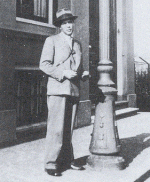
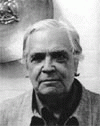
Cola Debrot, Utrecht 1936 (picture: www.dbnl.org) Cola Debrot at a later age (picture: www.debezigebij.nl)
Nicolaas ('Cola') Debrot (Kralendijk, Bonaire, 4 May 1902 - Amsterdam, 3 December 1981). Writer, doctor, diplomat and governor. As a child Nicolaas moved with his parents to Curaçao and Caracas. His father owned a plantation in Bonaire, his mother came from Venezuela. Cola attended highschool ('gymnasium') in Nijmegen, the Netherlands, in 1921 he started his study of law in Utrecht. There Cola befriended the poets Martinus Nijhoff and Jan Engelman and the painter Pyke Koch. Between 1928 and 1931 Debrot lived and worked in Paris where he was a ghostwriter. There he met his future wife, the American singer Estelle Reed. Back in Holland Cola studied medicine. The year 1935 was his debut as a writer with the short story 'My Sister the Negro', which later on was considered the beginning of Dutch-Antillean literature. Debrot became a doctor and practiced in Amsterdam during the war. From his home he stencilled and spread underground pamphlets and also committed other acts of resistance. Early in 1945 he was visited regularly by the writer W.F. Hermans. He took him to his patients under the name of 'Doctor Klondike', which Hermans later reworked into a short story. After the war Cola Debrot set up a medical practice in Curaçao. He also became active in politics, and in 1952 he came to The Hague as minister with full powers of the Netherlands Antilles. Between 1962 and 1970 he was governor of the Antilles. After this period he went back to Holland. The last years of his life he stayed in the Rosa Spier house in Laren, sometimes suffering from severe depression.
Extra source: www.wikipedia.org
Antonie Joseph Philip de Haseth Möller (Curaçao 1916-1979). Like many boys from the Antillean upper class, Antonie went to Holland to attend university. He studied law in Leiden and worked in business until 1941. During the war he was part of the student resistance. He tried to get to England but, during one of these attempts, in August 1943, was arrested in Southern France and sent to the German concentration camp Buchenwald. De Haseth Möller survived the camp and after the war he worked as a secretary to the Court-Martial in Britain. In 1948 he became clerk of the court in Curaçao, and two years later substitute public prosecutor. Between October 1955 and October 1957 de Haseth Möller was substitute-judge in Rotterdam. During that time he also was a member of the Netherlands Antilles court of justice (1957-1961). In June 1962 he became substitute-judge with the Court in Amsterdam and short time later judge of the Court in Haarlem.
Additional source: http://66.197.141.254/burhoven/recht-h.htm
Luís de Lannoy (Curaçao 1919-1971) as mentioned earlier, was a friend and mentor of Boy Ecury. Luís was the son of a pharmacist in Curaçao and was a student in Tilburg at the beginning of the Second World War. He joined the student resistance and for some time worked at a distribution office, in order to obtain food coupons for people who went underground. He also distributed underground pamphlets and made plans to sabotage German trucks with factory-goods. Ecury executed the assaults with firebombs. Lannoy was betrayed and arrested on the 12th of February 1944, and transported to Utrecht prison. During an interrogation the German guards pushed him through a window, causing glass splinters to enter his head. An attempt by Boy Ecury to liberate him failed. On September 5, 1944, ‘Mad Tuesday’, he managed to escape on his own.
Delfincio Navarro studied law in Holland during the war. Through Antillean student friends he became a member of the resistance (see Boy Ecury and Tirso Sprockel). Their communications were often in Papiamentu. After the war Navarro went back to the Antilles and worked there as a jurist (see also www.wikipedia.org).
Tirso (Pedro Tirso Maria) Sprockel (Curaçao, 28 January 1916 - 23 September 2007) was another Antillean student in Holland. He made his house into an underground refuge for Jews and allied pilots. It formed a chain in the escape route via Spain to England. George Maduro* was also involved in this, and would try himself (unsuccessfully) to escape to England in June 1943. Sprockel was arrested by the Sicherheitsdienst (German Security Police) af few times, but set free because of lack of evidence.
Also see wikipedia.org
After the war he married Wilhelmina (Minette) G.M. Dudar (Tilburg, 11 August 1913 - Curaçao, 20 July 1997). Sprockel, a linguist, would later dedicate himself to the study of Papiamentu (www.papiamentu.nl). Together with his cousin Aminta da Costa Gomez he was actively involved with disabled youngsters on Curaçao. In 1986 a training centre for mentally disabled youngsters was named after him. Tirso Sprockel was highly decorated. He died on 23 September 2007, at the age of 91.
The Future of the Antilles
Tirso Sprockel and some fellow-students, among them Delfincio Navarro* and Boy Ecury*, had many discussions about the future of the Antilles. They were critical about the position of influential Jewish businessmen and bankers like Maduro, Curiel, Henriquez and Cohen. They wanted more opportunities for ‘the real Curaçaoan’ – which ofcourse included themselves. The brave students were not free of anti-semitism but did help Jews go into hiding and escape.
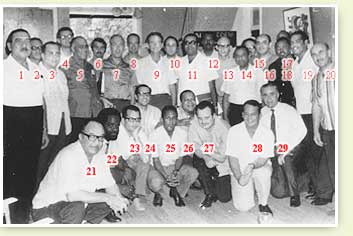
Plantage Bloemhof, Tirso Sprockel 5th (Source: www.bloemhof.an>
Carlos Alberto Winkel (Curaçao 1914). Winkel studied medicine in Leiden, where he obtained his doctors degree with a thesis on rheumatism in children. Like Oscar Beaujon* he refused to sign the loyalty declaration and joined the resistance. After the war he became a pediatrician on his island of birth. In 1975 he was appointed adjunct professor in pediatrics at the University of Groningen in the Netherlands.
Antillean Jews in Camp Westerbork
The various memorial sites list four Curaçaoan victims of the genocide on the Jewish people, as well as a woman who was born in 1920 on the island of Saba (Indonesia), but came from a Surinam family: Thelma Polak (see Surinam). Finally, two Jewish students can be named who lost their lives in a nazi-camp because of their service in the Dutch Army and/or their role in the resistance: Mordechai Gandelman and George John Lionel Maduro (see above).
- Edgard Alvares Correa. Born in Curaçao, November 22, 1880. Since 31 March 1917 Edgar Alvares was a patient in the psychiatric hospital Willem Arentszhoeve in Den Dolder, Zeist. The website 'Joods Monument' lists 14 patients and 2 staff at the W.A.-hoeve. On 2 February 1943 the first raid took place. On 27 November the raid vans returned. Because of fierce resistance by the staff, the occupiers were forced to retreat. They returned on 13 December. Twelve patients were captured and deported via camp Westerbork to Auschwitz. Edgar Alvares Correa died there on March 26, 1944, at the age of 63.
Additional source: www.rhoen.nl/oorlogsmonumenten/OorlogsmonumentenZeist.pdf
- Carolina van Lissa-van Lissa. Born in Curaçao, February 13, 1864. Last known address: Stadhouderslaan 4, The Hague. She died in Auschwitz December 15, 1942, at the age of 78. Mrs. Van Lissa was a widow. She lived together with a relative, Renette Victorine van Lissa (Kampen, December 8, 1886), who was also killed in Auschwitz on the same day.
- Abigaël Santcroos. Born in Curaçao, December 29, 1865. Last known adress: Central Israeli Jewish Psychiatric Hospital ‘Het Apeldoornse Bos’, Zutphensestraat 106, Apeldoorn. From the site of the Jewish Monument: ‘In the night of 21 to 22 January 1943, the Apeldoornse Bos was 'emptied'. The name of Mrs. Santcroos is number 33 on the list along with patients and other victims from the Shoah. She was among to the eldest inhabitants.
The young woman Thelma Polak is also on the list from ‘Het Apeldoornse Bos’. She may have been a nurse.
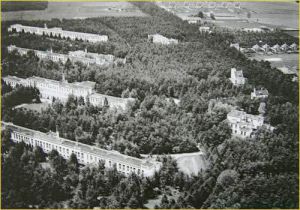
picture: www.oudapeldoorn.nl
What happened?
The following fragments are from 'Ondergang: De vervolging en verdelging van het Nederlandse Jodendom 1940-1945') by Dr. J. Presser (Aspekt, Soesterberg, I p.322-330, 2005) (www.dbnl.org/tekst). "Some figures? On the 31st of December 1942 there were almost 1,100 male and female patients in ‘Het Apeldoornse Bos’ (Apeldoorn Woods), which number was likely the same on the day of the catastrophe; the nursing, household and technical staff consisted of 400 to 500 persons; about a hundred of them must have gone underground. Only a dozen of them returned from deportation. There were 74 boys and 20 girls, according to some other sources a few more in the 'Achisomog' Institute; what became of these children, with severe behavioural and mental deficiencies, does not need further explanation.
The decisive order to clear the institute was given to Harster via Zöpf from Berlin, in this case from Eichmann, who sent a train of 25 wagons to deport the patients …. On Januari 19, Wielek states, ‘the Apeldoorn chief of police in talks with the residents and the medical superintendent declares that the institute will be 'freed of Jews'."
But from more than one document from that time it can be derived, that there were also people in the institution, who stayed there sort of 'undercover' … which was almost certain for a number of so-called student nurses; with a few other people who had gone underground. But many of the healthy left with the patients and shared their fate…
As soon as the loading of the trucks began, things got completely out of hand. Often the people were beaten and kicked to get them into the trucks; children were no exception. A lot of them were only half dressed. ‘I saw myself that patients, mostly elderly women, were placed on matrasses into a truck with the next human load on top’, reports an eyewitness…
Early next morning, Aus der Fünten called upon volunteers among the nursing staff, to join the trip. Twenty came foreward and he himself picked out 30 more; they were assembled in a separate wagon, which was hooked onto the back of the others. They were given assurance they could return afterwards or work voluntarily in a modern hospital. None of them survived. Neither did the patients…
Except for the fifty already mentioned, the Germans transported the staff to Westerbork. Or the first 300, who according to an eyewitness arrived singing... only half a dozen survived. The administrative staff stayed in the institution with the superintendent until the first of February. Only two of these 30 people survived; the super intendant also died…
‘After the SS-men did their jobs, they went for their pay; they looted every building. Nothing was spared. What all these buildings looked like after this looting is indescribable…’
Abigaël Santcroos died in Auschwitz, on the 25th of Januari 1943, at the age of 77. Surinam born Thelma Polak (22) was gassed six weeks later, on March 5, 1943, in Sobibor.
On April 23, 1990 former Queen Juliana unveiled a monument at the main entrance of the complex. ‘The tragic end of Het Apeldoornsche Bosch (Apeldoorn Forest), popularly called the 'Jewish Forest', is symbolised in a modest but moving monument in the Prinsenpark, with the inscription ‘Never have I loved so bitterly what was taken from us’, a quote from a poem by Ida Gerhardt (article by Wim Nijhof, ‘Schuylenburg looks like a small town’, www.sheerenloo.nl - Spectrum 2005).
- Guillermito Aniceto Ster. Born in Curaçao, April 17, 1888. Last adress Oranje Nassaustraat 8a in Hillegersberg (Rotterdam). Guillermito was married to Rebecca Sanders (Rotterdam, 1 April 1900). He died in camp Oranienburg (Sachsenhausen) on the 13th of January 1943, at the age of 54. Three months earlier, on 22 October 1942, Rebecca was killed in Auschwitz, at the age of 42.
A JOKOS-file (number 7588) of this household is present at the Council Archives of Amsterdam. The existence of this file indicates that after the war a claim was filed with the German Government because of the stolen inventory. - Guillermito Aniceto Ster. Born in Curaçao, April 17, 1888. Last adress Oranje Nassaustraat 8a in Hillegersberg (Rotterdam). Guillermito was married to Rebecca Sanders (Rotterdam, 1 April 1900). He died in camp Oranienburg (Sachsenhausen) on the 13th of January 1943, at the age of 54. Three months earlier, on 22 October 1942, Rebecca was killed in Auschwitz, at the age of 42.
Sources / Additional reading
See also Verhalen (Stories):
Abigaël Santcroos and Thelma Polak in 'Het Apeldoornse Bos'
Ad van den Oord: Allochtonen van nu en de oorlog van toen (Todays Immigrants and Yesteryear's War)
Isaac S. and Suzanne A. Emmanuel, History of the Jews of the Netherlands Antilles. Cincinnati 1970, p. 501.
weblog.donamaro.nl
www.veteranen-online.nl
www.fleetairarmarchive.net
www.geocities.com/Athens
www.geocities.com/Pentagon
www.nik.nl
Overall sources / Additional reading
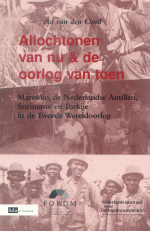
Todays Immigrants and Yesteryear's War - Marocco, the Netherlands Antilles, Surinam and Turkey in the Second World War (in Dutch)
Ad van den Oord, SDU/Forum 2003, isbn 90-5409-420-6
Moroccans fighting in the clay of Zeeland. Antillean students in the Dutch resistance. Surinam volunteers to the East Indies, Jewish refugees (not) to the West Indies. Turkey as the only bridge to Palestine…
The Second World War turned everything upside down. Human masses were set adrift by military service, deportation, invasion, or flight. Usually this meant suffering but it was also a challenge to think about one's own loyalty and identity. How were Dutch immigrants involved in the war and how are they experiencing this today? Every group has its own story, that much is clear. But if we really want to understand each other, we also have to share each others' past.
'Todays Immigrants and Yesteryear's War' is a first step. The Dutch Institute for War Documentation (NIOD) investigated on behalf of FORUM, Institute for Multicultural Development, the military, economical and political involvement of Morocco, Turkey, Surinam, and the Netherlands Antilles during the Second World War. This publication puts the mutual past of Dutch and several immigrant groups in the Netherlands in the spotlight.
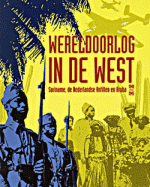
World War in the West - Surinam, the Netherlands Antilles and Aruba 1940-1945 (in Dutch).
Publication in connection with the exposition of the same name in the Resistance Museum Amsterdam, from 29 June 2004 - 28 November 2004. Liesbeth van der Horst - Publisher: Verloren in co-operation with the Resistance Museum Amsterdam, ISBN 90-6550-794-9
History of the Jews of the Netherlands Antilles - Isaac S. and Suzanne A. Emmanuel, Cincinnati 1970
Data private collection John T.S. Brouwer de Koning v. 5.3
Anne Frank Stichting
www.engelfriet.net
www.verzet.org
www.verzetsmuseum.org/west
www.verzetsmuseum.org/go-west
DutchJewry
Joods Monument
Lo Tisjkach
Oorlogsgravenstichting
